
Navigation Lights for Sailboats (And How To Read Them)

Last Updated by
Capt Chris German
June 15, 2022
Navigation lights on a sailboat can be confusing. If you understand the reason behind why they are the way they are however, they can make a lot more sense.
At their heart, sailboats are really just a power boat and as such must adhere to all power boat rules such as navigation lights. Other times however, a sailboat is classified in a special category. They have a set of additional lights they CAN show as an option, but are not always required to do so.
That’s about as clear as mud if you ask me and I contend that that is where the confusion about lighting a sailboat begins.
Just because you can show a light to identify yourself in times of low visibility, does not mean you have to and then we add in a little sibling rivalry between power and sail and things get downright adversarial when it comes to navigation and the night.
Table of contents

The USCG says You’re a Power Boat Whether You Like It or Not
Much to the consternation of many a sailor who has earned a commercial license to drive their sailboat, when you received your credential from the USCG it says you are a master of steam and power across the top with no mention of wind as a source of propulsion.
It is not until you read the back pages of your little red book that feels like a passport and looks like a US Sailing credential, that you will see the term “sail auxiliary”. That is because most of the time the U.S. Coast Guard knows that you are primarily reliant on your mechanical power to propel your vessel.
It's a sad thing, but the days of commercially viable sail boats are done and all but the most select few even have sails let alone use them as their primary power source. All sail boats by law are powerboats, but not all powerboats are sailboats.
Navigation Lights for a Power Boat
As a power boat, you are required to show certain lights and have been required to do so before power was even invented.
In the days of man powered vessels like the viking ships who relied on oars while in close quarters to power their vessels, they needed to show other boats, friend or foe, where they were by showing lanterns in the dark to identify themselves. As you know, it is a time honored rule among all the nations of the world both past and present, that you must avoid a collision at all costs while at sea and even the viking knew that you should not run into things.
By lighting the front and back of your boat, you could warn other boats of your presence as well as identify which way you were heading. As such there is a very specific rule in the Code of Federal Regulations Number 46 (CFR46 by common name) that spells out with detail how many, the color, the luminosity or brightness, the angle of visibility and the location of all of the lights required for navigation on every single boat, seaplane, submarine and other nondescript vessel conceived by man to date that they must show while underway in reduced visibility.
And there is no flexibility in the rules.
As such a power boat, and by extension all sailboats, MUST, without question show one green light on the starboard bow and one red light on the port bow and one all around white light or lights while operating in reduced visibility. These lights should shine at all 360 degrees of visibility with the bow lights shining at an angle of dead ahead to 22.5 degrees abaft the beam and the stern lights shining 225 degrees dead aft. A forward facing masthead light that is white in color shall shine forward to comply with the directive that all vessels must carry an all around white light. For more read here .
As you can see, there isn’t much wiggle room when it comes to lights that must be shown.
Sailboats get a little flexibility with lights
Sailboats however, are a little different when they are in fact sailboats, which is only when you are entirely reliant on the wind for power and in no way reliant on any mechanical or manual means of propulsion. And for good reason.
Back in the day when men were men and sailboats were wooden, fire was a major concern. Sails were coated with wax and other flammable substances and the wood on boats was saturated with oils and grease. Even the ropes were plant materials saturated with oils to keep them pliable and strong.
Add those highly flammable substances to a parching environment like the sea and you had what was essentially a giant floating tinderbox.
Then tell that giant floating tinderbox that they need to identify themselves to the world at large at night using oil lamps with flames because batteries and lights were not invented yet. It didn't take very long or very many ships burning to the water line for the Governments to say to the sailboats, you get to do things a little different.
As such, sailboats are given special dispensation when it comes to lights aloft. They don't have to show an all around white light in their rigging because no one wanted to set their rig on fire with oil lamps 60 feet up in their rig.
However, when a sailboat takes their sails down such as when they are powered or at anchor, they must resume the display of an all around white light or lights aloft. That became a real challenge with aluminum masts and the disappearance of rat lines on the shrouds because there was no easy way to climb the rig and check the bulbs up the mast on a regular basis.
Red over Green Sailing Machine
I have no idea where the history of this particular light comes from, but if you ever take a deck exam with the USCG, you better remember this mnemonic. An all around red light over an all around green may be displayed on a vessel during times of reduced visibility to indicate that a vessel is operating under sail power alone.
I won’t even speculate on how or why they came up with this particular light configuration, but if you want to use these lights as a sailing vessel, you can do so, but that means that you will need three all round lights at the top of your mast, an all around white, an all around red and an all around green, just in that order.
The red over green is to be displayed in addition to the running lights or the red and green bow lights with the 225 degree stern light. As always, when the motor comes on, so does the steaming light or the forward facing white light that is also usually about ¾ of the way up on your mast to complete the requirement of an all around white light that indicates a power vessel.
What is a “steaming light” and why are you mentioning it now?
Most sailboat electrical panels will have a switch that is labelled “steaming light” and it will only come on when your anchor light is off. This is probably the most confusing part of sailboat navigation lights so if you are confused about this, you're in good company as most people are.
A “steaming” light is named thusly, going back to the days of steam powered sailboats where when they fired up their boilers and doused the sails, they became a power boat once again. There aren’t too many steam powered boats, let alone steam powered sailboats, but the name stuck and it is a vestige of a bygone era.
Either way, when you fire up your motor, you turn on your “steaming light” and that locks out the all around white light which is used for anchoring to minimize the number of switches on your panel and reduce the number of wires in your mast. The fewer wires, the less chance of something not working or becoming disconnected.
The steaming light and the anchor light both go up the mast, but you can’t use an all around white light while using the 225 degree stern light at the deck level because to other boaters you would look like you have two white lights from the stern and that would be confusing.
The anchor light is used exclusively for anchoring while the steaming light is used to indicate you are a power vessel while underway.
As to why I am mentioning it now in the article, is because this would have blown your mind if I started with this subject cause it can be really confusing stuff.
Aspect Recognition with Lights
Remember when I said earlier that lights can help you tell others which way you are heading as well as tell you which way other boats are heading? That is called the aspect of the vessel and the USCG tests you on this for your deck exam as well.
Knowing that the bow lights go 22.5 degrees abaft the beam on both sides or 112.5 degrees on each side, and the stern light faces 225 degrees aft for a total of 360 degrees of visibility, you can tell a lot about where a boat is heading and who has the right of way.
One thing that's easy to remember is red means stop and if you see a vessel's red light, it means stop as you are the give way vessel and approaching the other vessel from his port side. Conversely it works with green as well as that means you are approaching from the other vessel's starboard side and you are the standon vessel.
If you see a red and green light equally low on the horizon, that means your heading dead on into another vessel's path and conversely if all you see is a white light low on the horizon, it means you are overtaking another vessel power or sail, we don’t care because it is an overtaking situation. However, any time you do see a white light aloft in addition to the red and green bow lights, you know you are encountering a power boat.
Then there are angular approaches as well, where you see white and red or white and green light low on the horizon. You know in that case you are seeing a portion of the bow lights and stern lights from the side approaches of a vessel. Based on which direction those lights are heading, you can deduce which way that boat is going in relation to your boat.
So put it all together and you see a green light and a white light low on the horizon with a red over green light aloft, you know that you are approaching a sailboat that is traveling to your port and that might make you the standon vessel. That is of course, if we didn’t concern ourselves with windward and leeward and port tacks and starboard tacks, but that is a discussion for another article. So stay tuned when we talk about sailing rules and the right of way. But for now, do good, have fun and sail far.
Related Articles
Capt Chris German is a life long sailor and licensed captain who has taught thousands to sail over the last 20 years. In 2007, he founded a US Sailing-based community sailing school in Bridgeport, CT for inner city youth and families. When Hurricane Sandy forced him to abandon those efforts, he moved to North Carolina where he set out to share this love for broadcasting and sailing with a growing web-based television audience through The Charted Life Television Network.
by this author

Most Recent

What Does "Sailing By The Lee" Mean?
Daniel Wade
October 3, 2023

The Best Sailing Schools And Programs: Reviews & Ratings
September 26, 2023
Important Legal Info
Lifeofsailing.com is a participant in the Amazon Services LLC Associates Program, an affiliate advertising program designed to provide a means for sites to earn advertising fees by advertising and linking to Amazon. This site also participates in other affiliate programs and is compensated for referring traffic and business to these companies.
Similar Posts

How To Choose The Right Sailing Instructor
August 16, 2023

Cost To Sail Around The World
May 16, 2023

How To Drive A Pontoon Boat
Jacob Collier
December 19, 2022
Popular Posts

Best Liveaboard Catamaran Sailboats
December 28, 2023

Can a Novice Sail Around the World?
Elizabeth O'Malley

4 Best Electric Outboard Motors

How Long Did It Take The Vikings To Sail To England?

10 Best Sailboat Brands (And Why)
December 20, 2023

7 Best Places To Liveaboard A Sailboat
Get the best sailing content.
Top Rated Posts
Lifeofsailing.com is a participant in the Amazon Services LLC Associates Program, an affiliate advertising program designed to provide a means for sites to earn advertising fees by advertising and linking to Amazon. This site also participates in other affiliate programs and is compensated for referring traffic and business to these companies. (866) 342-SAIL
© 2024 Life of Sailing Email: [email protected] Address: 11816 Inwood Rd #3024 Dallas, TX 75244 Disclaimer Privacy Policy
Boat Navigation Lights Rules: Illustrated Beginners Guide
When navigating at night, the lights on other boats are your first clue about the moving dangers around you. And your navigation lights are your first line of safety in avoiding collisions in the dark, and they tell others vessels what you are and what you are doing. The rules sound complex, but with a little understanding you can get the basics for any situation.
So what are the basic navigation light rules? For most small vessels, motoring requires red and green (port and starboard) lights, and a white light visible in all directions around the boat. This is almost always a stern light and a masthead light on sailboats. Boats under sail require port and starboard lights, and a white stern light. Sailboats below sixty-five feet may show a tricolor light at the masthead instead of side and stern lights when sailing.
That's it, in a nutshell. There's a little more to it, as the rules change with different sizes and there are some specifics about angles of display for the colors. Identifying other ships at sea requires more study, but the basics are the same. And it's not much trouble to make sure you've always got the proper lights on your vessel.
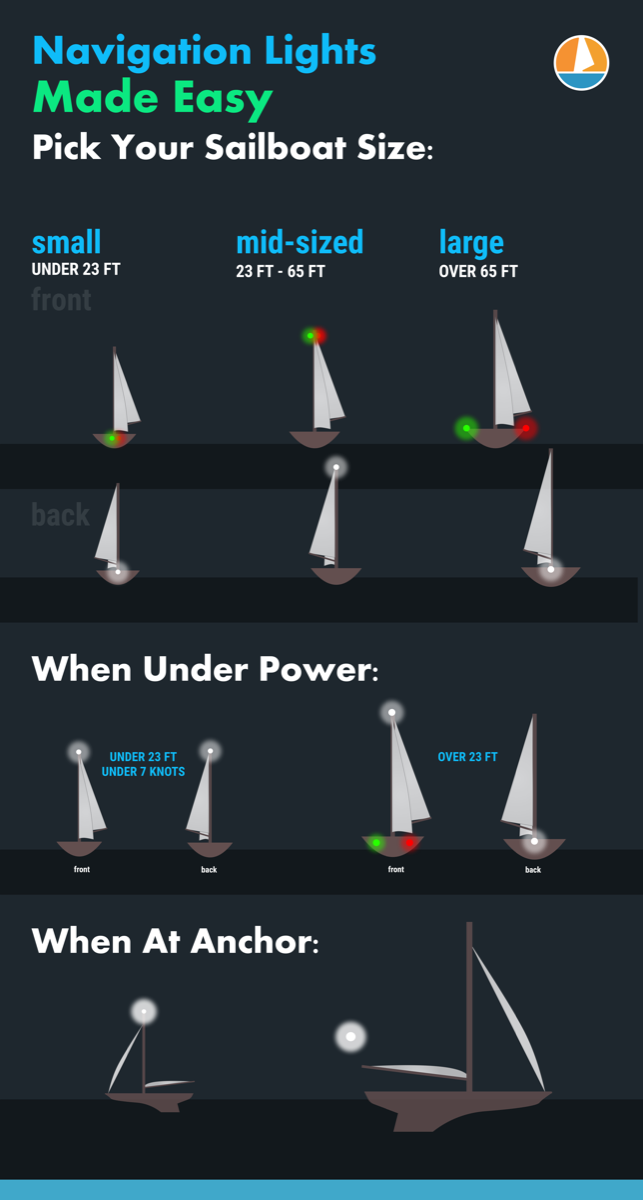
On this page:
What are the official colregs rules for your sailboat, what about the uscg (united states coast guard) rules, lighting at anchor, identifying the boats around you.
The International Regulations for the Prevention of Collision at Sea , abbreviated "COLREGS" is very specific about the lights required, their shapes and sizes, and the distance they must be visible. For the smaller boat, the following definitions apply.
- Masthead Light - a white light placed centerline on the boat showing an arc of 225 degrees with 112.5 degrees either side of the front of the vessel.
- Sidelights - A red light on the port side and a green light on the starboard. They must show an arc of 112.5 degrees from centerline of the bow.
- Stern light - A white light on the stern of the boat showing an unbroken arc of 135 degrees from centerline of the vessel.
- All-round light - A light showing in an unbroken arc of 360 degrees.
The good news is you need not measure these angles. Any properly installed USCG or COLREGS approved light which will cover the correct arcs. If you have to replace the original light from your boat, make sure it's with an approved replacement.
Lights When Sailing
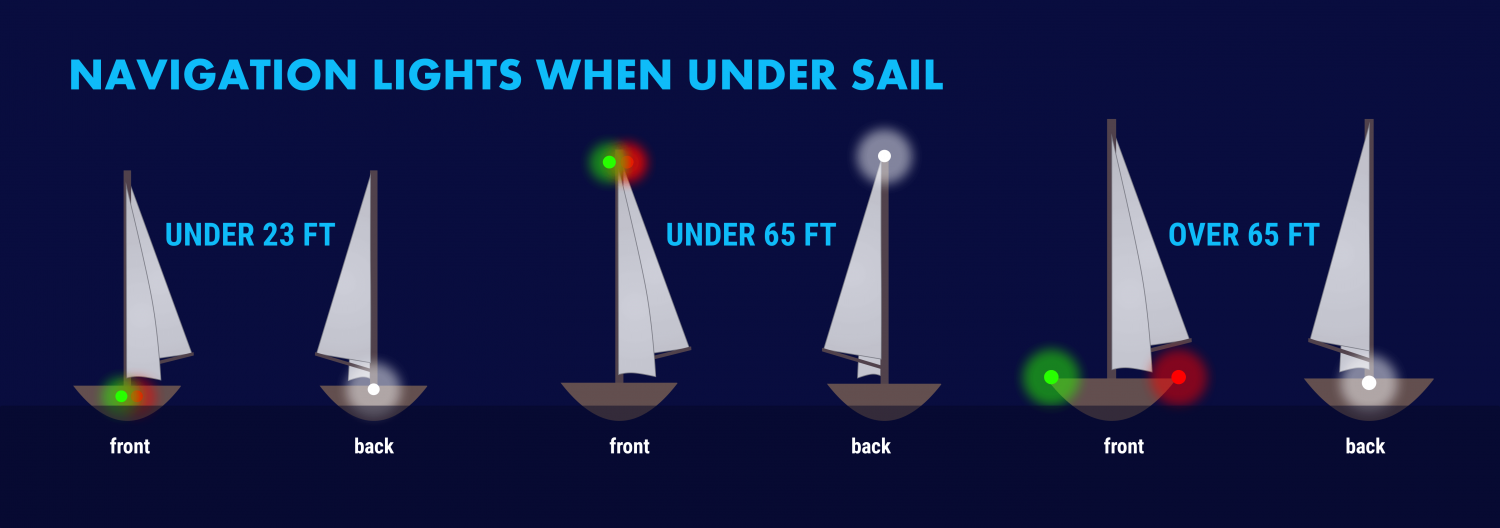
The specific rules for a sailboat under sail are in COLREGS Rule 25 and vary slightly with the size of the boat. A sailboat powering is considered a power boat and falls under in Rule 23.
- Under 23 feet (7 meters) - side lights and a stern light, possible. If these lights can not be displayed a light must be kept at hand to help avoid a collision. This can be a bright flashlight.
- Over 23 feet - Side lights visible to one nautical mile and stern light visible for two.
- Vessels under 65 feet may combine both sidelights into a single lantern on the bow.
- May show a tricolor light on the masthead instead of sidelights and a stern light. It's one or the other though, do not show these lights at the same time .
- Masthead light must be visible for three nautical miles, all other lights must have a two nautical mile visibility.
- Side lights must be separated.
- May not show a masthead tricolor light.
- Masthead light must have five nautical mile visibility, all other lights must be visible for two nautical miles.
- Optional masthead lights - any vessel under sail may display a red light over a green light at the masthead with sidelights and stern light. The red over green may NOT be displayed with a masthead tricolor light. It's one set or the other.
Lights When Motoring
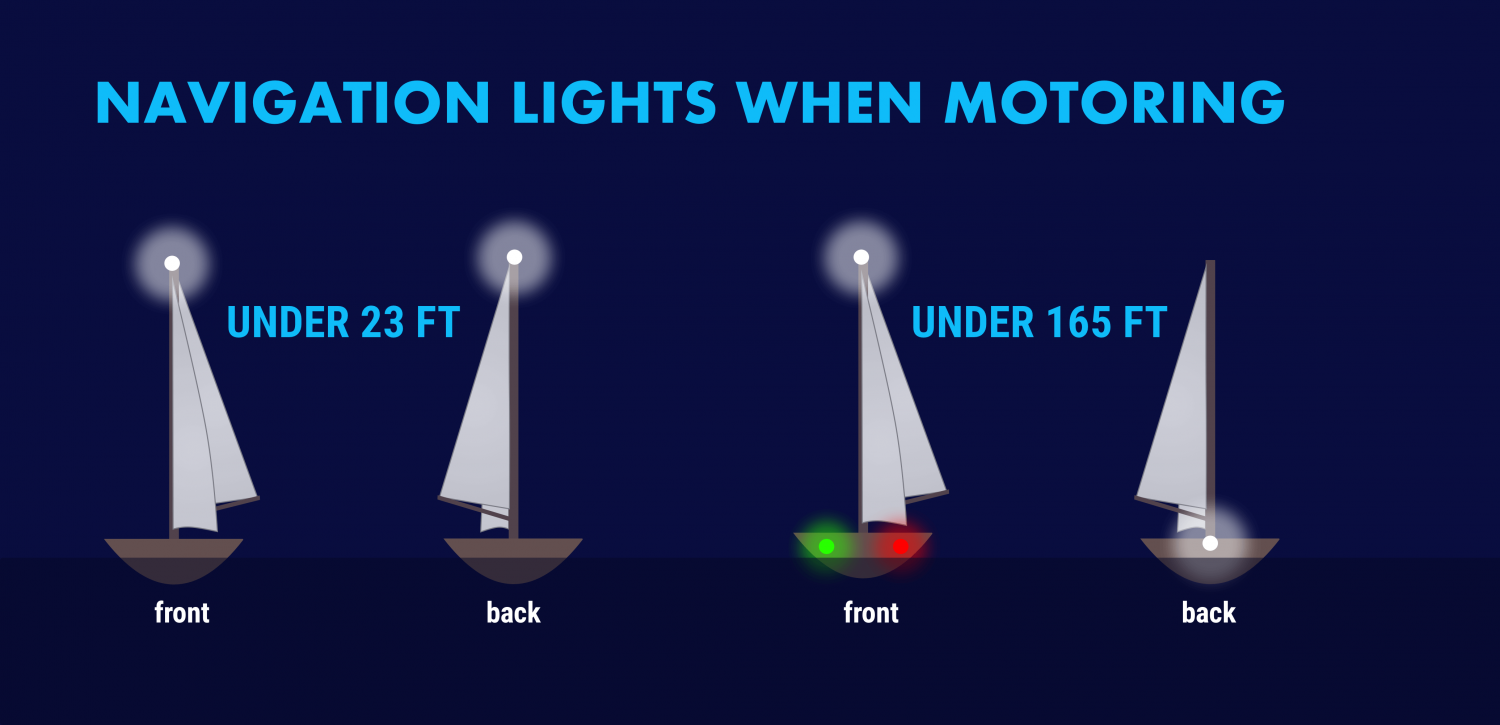
For all navigational purposes a sailboat under power is considered a power boat. This includes motor sailing - if the engine is on and providing propulsion you are on a power boat, even if the sails are up . This applies to navigation lighting, sound signals in fog and limited visibility, and rights of way.
Sailboats under 50 meters under power need to show:
- A masthead light
- Stern light
A power-driven vessel under 23 feet (7 meters) that does not exceed seven knots of speed may display an all around white light, though sidelights should be used if available.

The USCG has published its own "Rules of the Road" that are based on the COLREGS. In addition, it has rules for the "Inland Waterways" for rivers, inland lakes and the Great Lakes.
The good news is this has no impact on what you have to do with your own boat.
They mostly relate to lighting changes on towed vessels like barges and tugs. For example, a vessel towing or pushing another vessel in the ocean under COLREGS shows two masthead lights, sidelights and a stern light, whereas in Inland Waterways the towing or pushing vessel displays two yellow towing lights instead of a white stern light.
If you sail on lakes, rivers or the Great Lakes where towed commercial traffic is common you should learn the inland lights, but coastal or ocean sailors will never see these.
When you anchor outside a designated mooring field, you should display an all around white light at the masthead or as high in the boat as practical.
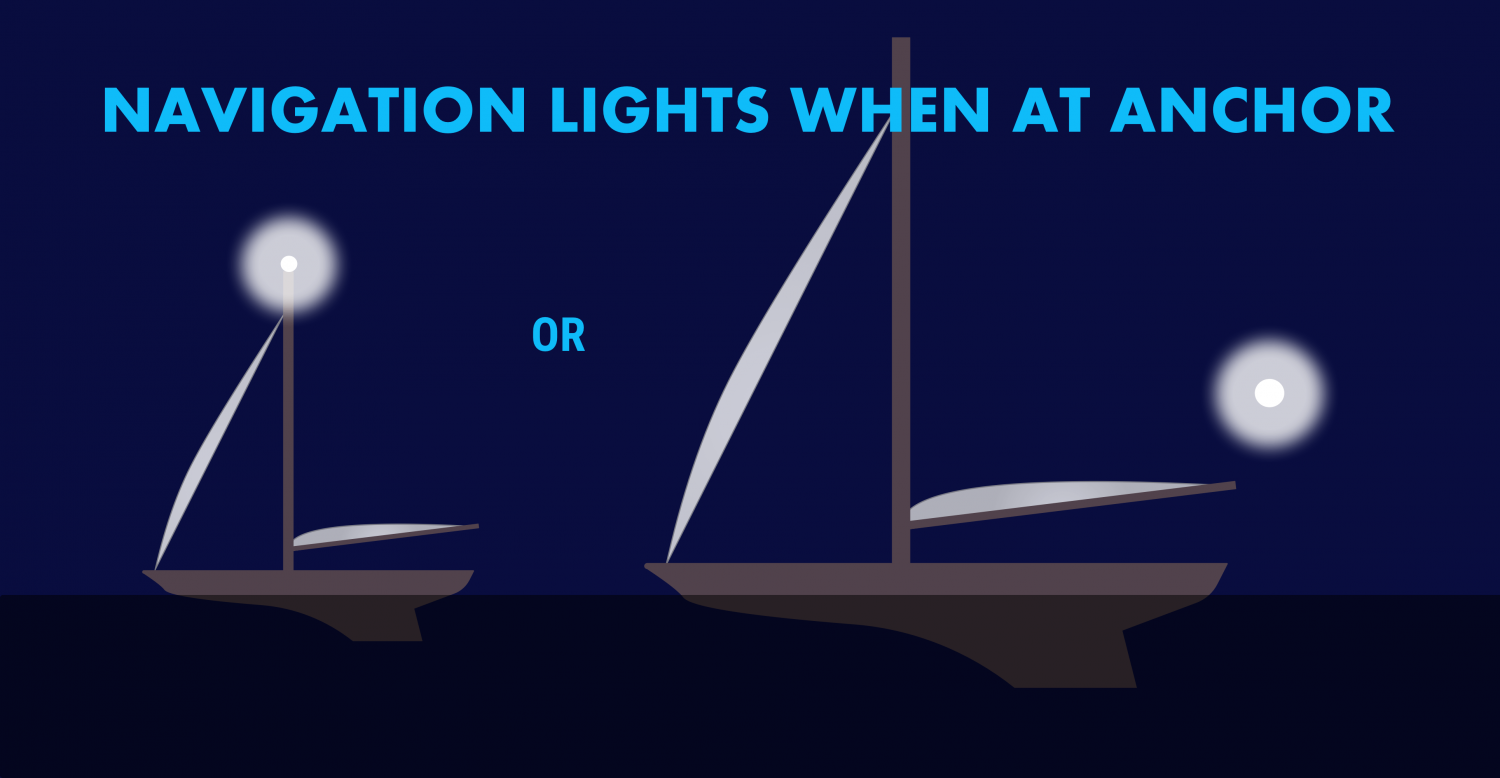
If your boat is large and has a very tall mast, you may wish to display another light closer to the waterline. Boats approaching in the dark may not see a light on a mast sixty or seventy feet in the air when they are close to your boat.
We use a simple garden path light on our stern when we anchor, left in a rod holder or flag socket. It comes on automatically at dusk and is a cheap and easy way to be more visible. There is no specific rule stating you can not display more lights than required, or the nature of any lights beyond the required all around light.
The COLREGS also specify that a round black "daymark" should be displayed in the rigging of any vessel at anchor. Very few small vessels observe this, however it is the correct display for a vessel in an anchorage.
If you tie to a mooring in a marked mooring area you are not required to display anchor lights, but there is no harm in doing so.
The other important reason to know your lights is to figure out what's going on around you at night. The water may be ablaze with white, red, green and other lights at night and they are your first key to avoiding collisions and problems.
All combinations of lights for fishing boats, commercial vessels, and so on are outside this post‘s scope. The odds are small you will encounter a submarine, seaplane or hovercraft at night, but there are regulations regarding specific lighting for each of those vessels!
There are a few fundamentals to help you figure out what that is you see on the horizon, which way it is going, and whether it is a danger to you.
Port Wine is Red
The fundamental rule is that red sidelights will ALWAYS be on the port side of a vessel, and green lights will always be on starboard. However, some vessels can use all around red and green lights for other purposes, though those will be higher than sidelights.

The light‘s on a ship is not important, some large tankers and freighters will have their sidelights far aft and put them on the superstructure for better visibility. It is not safe to assume that sidelights you can see are on the bow of large vessels .
When you can see the color, you know which way the bow is pointing. If it's red, it's pointing more or less to the left and will travel in that direction. A green light shows it is heading more or less to your right.
If you can see the red and green lights at the same time, you are looking directly at the bow of the vessel. When you are far away, this isn‘t as alarming as if you are close crossing. Seeing red and green lights together on a vessel is something you never want to see for long.
Be aware of red and green lights used in combination with other red, green and white lights. These may not be running lights and could have other significance.
Tankers, Freighters and Large Ships
Tankers, freighters and large ships will have side lights, a stern light and a masthead light. In addition, on vessels over 50 meters there will be a second masthead light further aft and higher than the forward light. The masthead light positions are a better tipoff to the bow direction and how far from the bow the sidelights might be. Remember - on a large vessel the sidelights may not be at the bow or even close to it.
USCG Inland Rules allow for a second all-around white light on large vessels on the Great Lakes instead of a second masthead light.
Fishing Boats
Fishing boats engaged in fishing will have more complex light displays. When they aren't fishing, they will show lights like any power vessel, but Rule 26 spells out light combinations that vary by the fishing activity being done. In general:
- Boats which are Trawling but not making headway will display a green all-around light over a white all-around light , and a masthead light aft of these lights. Boats making headway while trawling will show these lights, plus sidelights and a stern light.
- A vessel fishing other than trawling will show a red all-around light over a white all-around light . When making way they will also show sidelights and a stern light.
- If a vessel has gear more than 150 meters away from the boat, it will show a second all around light in the direction of the gear. The best rule is to give fishing boats as wide a berth as you can at night. They're easy to pick out if you check the top light configurations but their course may be difficult to predict.
Towing and Pushing
Towed vessels can be the most dangerous to cross, but they have the most lights to tell you what is happening. Refer to COLREGS or the USCG Rules of the Road Rule 24 for all combinations You can pick a tow/push vessel out with the following lights:
- Two or three masthead lights in a vertical line. Three masthead lights shows a tow over 200 meters. Additional masthead lights may show for larger tow vessels.
- A towing light (yellow light with the same characteristics as a stern light) directly above the stern light.
- The will also have side lights and a stern light.
- The towed vessel will show sidelights and a stern light. Lighting may vary under USCG inland rules, where towing lights may replace stern lights. Learn these differences if this is your regular cruising ground. If you think there is a tow ahead of you, always go well behind the aft most set of lights. Never go between a tow and avoid crossing ahead if possible as it may restrict their maneuverability.
Special Situations
There are several rare situations you may encounter. As a general rule, if there are a lot of lights and you don't understand them look for the sidelights on a moving vessel. If you can find them and figure out the direction it is moving, it makes the vessel easier to avoid. Stay well clear of lights you do not understand if you can avoid them without risk.
Most of these signals are used by larger, commercial vessels and you will not need them.
They use these light combinations with other light combinations. For example a towing vessel may also be restricted in maneuverability, and a vessel constrained by draft will show running lights if moving.
- Not Under Command - two all around red lights in a single line
- Restricted in Ability to Maneuver - red, white then red in a single line
- Constrained by draft - three all around red lights
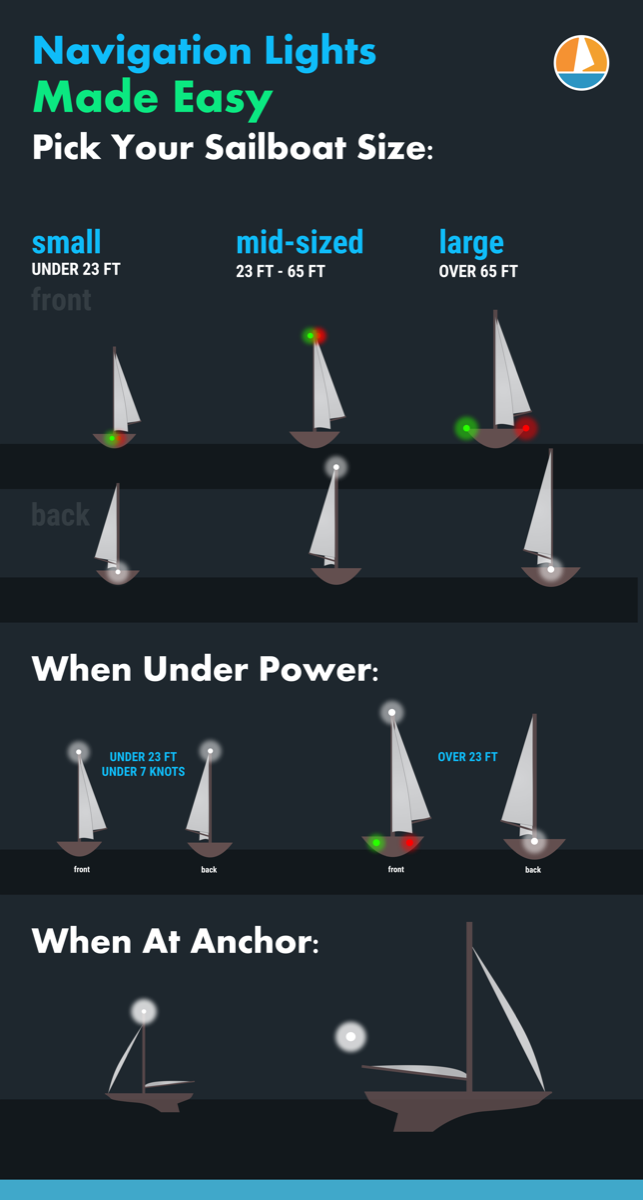
Leave a comment
You may also like, 17 sailboat types explained: how to recognize them.
Ever wondered what type of sailboat you're looking at? Identifying sailboats isn't hard, you just have to know what to look for. In this article, I'll help you.

The Ultimate Guide to Sail Types and Rigs (with Pictures)

Boat Navigation Lights: Everything You NEED to Know (2024)
In many cases, boating at night requires the use of boat navigation lights, but boaters often have many questions about them.
They often wonder when they’re needed, what the requirements are for various locations and vessels, and more.
We’re going to do a deep dive into navigation lights for boat to see what you need on your boat, and when you need to use them.
Legal Requirements
Types of navigational lights, which navigation lights are required on my boat , operators responsibility , navigation lights .
On any vessel operating on or in US waters, there is a need for the operator to display navigation lights under certain circumstances. Their purpose is to make vessels aware of each other at night or in times of generally reduced visibility. This is incredibly important during times when you may not be able to see the craft itself.
Other than visibility, marine nav lights also help boat operators determine the size, direction of travel, and even the potential activity of another boat on the water. When an operator understands the type of information each light tells them, they will be better able to determine appropriate courses of action for potential situations.
Boat running lights are divided by location and color, and each of them has specific requirements with how they must be displayed and perceived. You are the one legally responsible for displaying proper nav lights on the boat, for displaying them at the proper times, and for understanding how to read them.
The US Coast Guard ’s legal navigation light requirements include guidelines for every aspect of light usage.
Their materials start by first defining the standard daily period during which they must be used, then they detail how many of each type of light is needed as well as where they are located. Each light also has constraints regarding its visible distance and the arc over which it can be seen.
In the US, the Coast Guard says that any powered vessel that is under 39.4ft., may operate with boat nav lights in as little as two positions, an all-round light at the stern, and a set of sidelights at the bow.
Vessels that are under 164ft. must have lights displayed in four positions, a stern light, a masthead light, and boat sidelights on both the port and starboard, near the bow.
The ship navigation lights also have minimum visibility distances, depending on the size of the craft. The minimum visibility for nav lights, even for small crafts, is one mile, with requirements that other lights on larger vessels be visible for up to 3 nautical miles.
Also read: Boating Rules and Etiquette On the Water
Boat lights come in 4 types, sidelights, stern light, masthead light, and all-round light. Lights only come in white, red, and green, and all have very specific jobs.
| White | Over fore and aft centerline of the boat | 2 miles | 5 miles | 225 degrees | |
| Red | On the port side, 22.5 degrees abaft the beam | 1 mile | 2 miles | 112.5 degrees | |
| Green | On the starboard side, 22.5 degrees abaft the beam | 1 mile | 2 miles | 112.5 degrees | |
| White | Near as possible to the stern | 2 miles | 2 miles | 135 degrees | |
| White, Yellow, Tricolor | N/A | 2 miles | 2 miles | 360 degrees | |
| Green, Red, White | Over fore and aft centerline of the boat | N/A | N/A | 360 degrees | |
| Two White Vertical, Three White Vertical | Over fore and aft centerline of the boat | 2 miles | 2 miles | 135 degrees | |
| Flashing Blue | Anywhere not interfering with other lights | 2 miles | N/A | 180-225 degrees |
Masthead Light
The masthead light is the white light located about ⅔ of the way up the mast, rather than at the top as you’d think. This boat bow light is required when using motor power at night. To be acceptable, the light must have an arc of 225° and needs to be seen from 2 miles away.
Large boats can have up to 3 mast lights. If your boat is shorter than 39 ft., all 2-3 white mast lights can be combined, utilizing one larger white light at the top of the mast.
Color : White ARC : 225 degrees Position : Front of boat
Port Sidelight
The boating lights located on the port side of the watercraft are red and mounted so that boats can see as they approach either head-on or from the left. This light helps tell if a boat is coming towards you or if it is pointing away. The phrase “red, right, returning” means that if you see a boat with their red navigation light on the right, they are facing your boat. The only time it is not needed is when your boat is anchored for the night .
Color : Red ARC : 122.5 degrees Position : Forward, left side
Starboard Sidelight
If you are to approach a boat from the front or right, you will see the green starboard sidelight. With an ARC of 122.5 degrees, approaching boats will be able to see yours easily.
This light helps tell you whether or not you have the right of way, which is important when it comes to keeping both you and your passengers safe. These are some of the front boat lights.
This light will often be combined with the port light, in small boat navigation lights. When out in the water, if you see the green light, that means it is safe for you to go, as you have the right of way.
Color : Green ARC : 122.5 degrees Position : Forward, right side.
The rear boat light is called the stern light. It is used to mark the rear of the boat. The operator can infer from only setting a boat stern light, that they are directly behind the vessel.
The stern light is white and is visible for an arc of 112.5 degrees on both the port and starboard sides, making a full arc of 225. Being able to see the red starboard side light as well as the stern light, should indicate the other vessel is traveling to the right from the perspective of the observer.
Color : White ARC : 225 degrees Position : Stern
All-Around Light
One of the boat night lights that is required when on your boat between sunset and sunrise is the all-around light. This light is intended to be seen from any point and helps to tell what direction a boat is moving. This light is also used when a boat is stopped or anchored.
This anchor light is required to have an ARC of 360 degrees and should be visible for two miles. The all-around light is white and it is located at the top of your boat’s mast for maximum visibility.
Color : White ARC : 360 degrees Position : Top of mast
Tricolor Light
A tricolor light is a sailboat mast light that has your three types of bow light in one convenient piece of equipment. They are for sailboats that are smaller than 65.6 feet long. The point of this sailboat light is to increase your nighttime visibility. They are mounted at the top of the mast, allowing larger boats to see yours better. They are not permitted to be used by any boats with a motor. The only type of boat that can utilize a tricolor light is a sailboat.
Color : White, red, green ARC : 360 degrees Position : Top of mast
Towing Light
These yellow lights are important, as they indicate to other watercraft that, not only is there another boat nearby but that they are also towing someone as well. The light must be positioned at the back of the boat, as close to the stern as possible. The goal is to avoid having anyone run into the boat that is being towed, as there may be no lights showing where that boat is located. The boat lighting requirements when towing state that both sidelights, a stern light, and masthead lights should also be displayed.
Color : Yellow ARC : 135 degrees Position : Over fore and aft centerline of the boat
Law Enforcement Light
Lights used by law enforcement on the water are flashing blue lights that can flash 120 times per minute or more. They can be used nearly anywhere that is convenient for the operator, provided they do not interfere with the function of the other lights.
This light may be displayed by any type of local law enforcement that is engaged in the course of their duty. This can apply to local, state, or federal police, as well as officials from wildlife and conservation departments, the Coast Guard, and more.
Color : Flashing Blue ARC : 180-225 degrees Position : Anywhere not interfering with other lights
Find your boat type below for the lineup of nav lights that you will need to safely operate after sunset and in other times of limited visibility.
Be sure you know which lights you will need to have on while underway, as well as at anchor or while towing. If you’re sailing, don’t forget that you are considered power-driven when using your motor.
Powerboat under 23 feet (7m)
Powerboats under 23 feet are required to have the following navigation lights displayed:
- One white masthead light visible for 2 miles
- One red & green sidelight visible for 1 mile
- One stern light visible for 2 miles
- One white, red, green, or yellow all-round light visible for 2 miles
Powerboat Under 39,4 feet (12m)
Powerboats under 39,4 feet are required to follow these boat light rules:
- One all-round light visible for 2 miles
Powerboat Over 39,4 feet (12m)
Powerboats over 39,4 feet are required to have the following navigation lights displayed:
- One white masthead light visible for 5 miles, unless less than 20 meters, then 3 miles
- One red & green sidelight visible for 2 miles
Powerboat 39,4 feet (12m) to 164 feet (50m)
Powerboats between 39,4 feet and 164 feet are required to have the following marine running lights displayed:
- One white masthead light visible for 6 miles
- One red & green sidelight visible for 3 miles
- One stern light visible for 3 miles
- One all-round light visible for 3 miles
Sailboat Under 23 feet (7m)
Sailboats under 23 feet are required to have the following sailing navigation lights displayed:
- One white stern light
- One white mast lantern positioned at or near the top of the mast where it can be easily seen from a distance
Note: if it is not practicable for the vessel to display the prescribed lights, one all-round white light can be used or a hand torch, with enough time to prevent a collision.
Sailboat Under 65,6 feet (20m)
Sailboats under 65,6 feet are required to have the following sailing lights displayed:
Tug Boat With Tow Length Under 656 feet (200m)
Tug boats with tow lengths less than 656 feet are required to have the following navigation lights displayed:
- Two masthead lights in a vertical line
- Stern light
- Towing light in a vertical line above the stern light
Tug Boat With Tow Length Over 656 feet (200m)
Tug boats with tow lengths longer than 656 feet are required to have the following navigation lights displayed:
- Three masthead lights in a vertical line
- A towing light placed vertically above the stern light
- A diamond shape visibly displayed
Anchored Vessel
Vessels at anchor or aground are required to observe the following boat lighting rules:
- One white all-round in the fore
- One white all-round at a lower level than the fore, at the stern
If aground, the vessel should display two red all-round lights in a vertical line
Vessel Under Oars
Vessels under oar power have similar requirements to follow as small sailboat lighting:
- One stern light
Or, alternately, one white all-round light or hand torch to be used to manually signal to avoid collision
Vessel Engaged in Fishing
Vessels actively engaged in fishing are required to have the following marine navigation lights displayed:
- Two all-round lights oriented in a vertical line, red on top and white on the bottom
- One all-round white light for gear more than 150 meters from the vessel
- When making its way through the water, there shall also be sidelights and stern light
Vessel Engaged in Trawling
Vessels engaged in trawling are required to fulfill the following boat light requirements:
- Two all-round lights oriented in a vertical line, green on top and white on the bottom
- One masthead light abaft and higher than the all-round green
Kayakers and Canoers
Kayakers and canoers are required to have the following navigation lights displayed:
Alternatively, a hand torch or lantern which can be used to signal to avoid collisions
Personal Watercraft
There are no established rules for navigation lights on personal watercraft, even though many of them are classified as a boat by coast guard standards. Personal watercraft are often not permitted to operate outside of the sunrise-to-sunset period, and so most manufacturers do not install or make possible the installation of navigation lights.
Vessels Restricted in their Ability to Maneuver
Vessels restricted in their ability to maneuver are required to have the following navigation lights displayed:
- Three all-round lights displayed as high a possible in a vertical line, red at the top, and white in the middle
- One masthead light
The USCG as well as state authorities hold the operator of the vessel responsible for the correct use and understanding of nav lights.
This means they also must make sure all of the lights used meet the requirements set forth by the authorities.
This also extends to ensuring that the lights are all installed for optimal visibility while underway, so if your cruiser rides high, make sure your lights are still visible.
What navigation lights do I need on my boat?
Boat light regulations state boats must have a pair of red and green sidelights, and an all-around white light that can be seen from 360°.
Why are navigation lights red and green?
Navigation lights for boats indicate to others which direction a boat is facing. The red indicates the left side of the boat, green is on the right.
What lights need to be on a boat at night?
Per the navigation lighting rules, it is crucial that you have your red and green navigation lights, as well as the white 360° light.
Which three colors are used for navigational lights?
The boat light colors are going to be green, red, and white. If you see a blue light, this generally indicates a government vessel.
Do I need navigational lights on my boat?
Yes, all boats are legally required to have the minimum red, green, and white boat safety lights
when operating in the dark.
Why do boats have blue lights?
When you see a boat that has blue boat lights at night, that means that it is likely the coast guard or law enforcement.
Why is port red and starboard green?
The light on the starboard side of the boat is green because it is ‘safe’, as the steersman will be able to see other boats.
What does a single white light mean on a boat at night?
If you can only see a single white light on a boat at nighttime, you are likely seeing the stern light or the boat anchor light.

Robert Owens is the Chief of Content of Quicknav. Robert has been boating for over ten years and loves to share his experience on the water. His first boat was a dirt-cheap moderately beat up 2003 Bayliner 175, where he learned a tremendous amount about trailering, launching, docking, operating, and maintaining. He currently owns a Cruiser Yacht and is eyeing a sailboat.
Similar Posts

12 Practical Tips to Learn Boating Fast (2024)
For someone who wants to learn boating, it can be a bit intimidating looking from the outside in. You might…
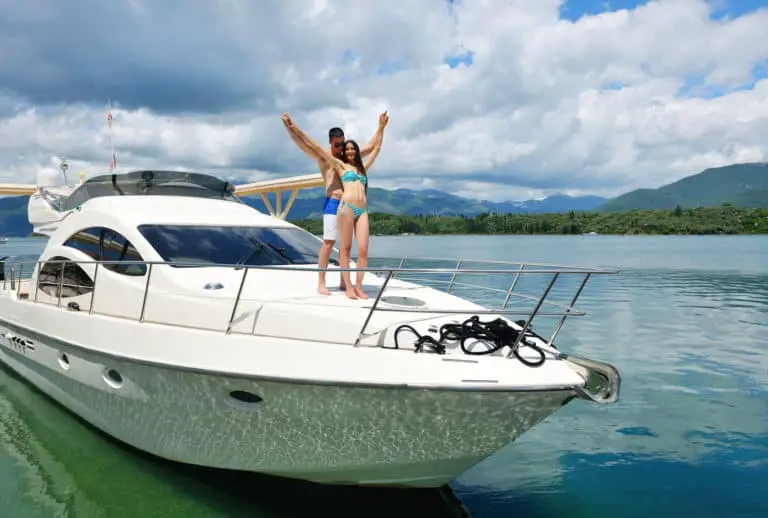
How Much Does a Boat Cost in 2024? (With Ownership Costs)
Residents all across the US are buying more boats than ever before. From kayaks and canoes to the most luxurious…
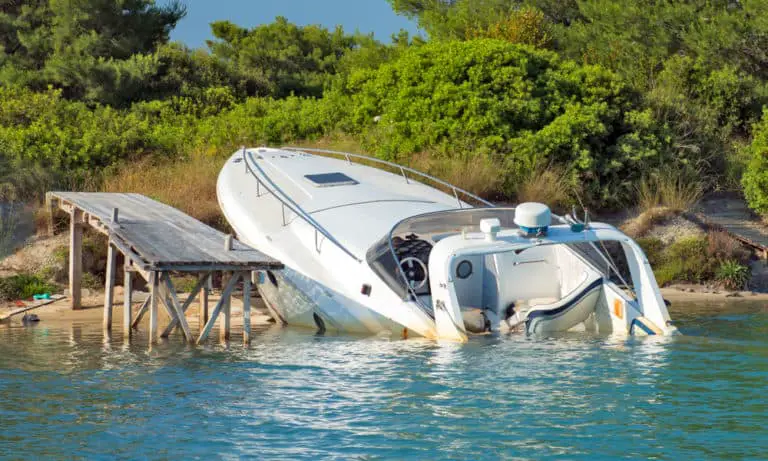
Boating Accident Statistics in 2024 (Latest U.S. Data)
Thanks to worldwide lockdowns and social distancing, we are seeing an increase in recreational boating and related accidents. Sadly, boating…
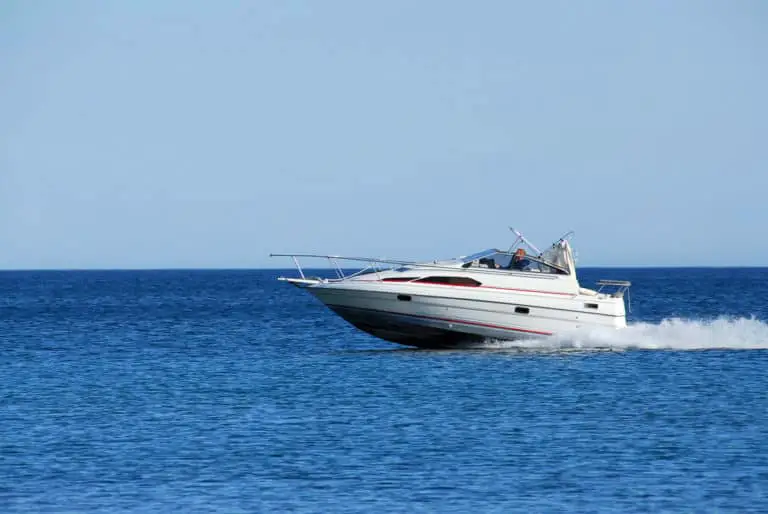
Boating Rules and Etiquette On the Water (2024)
Understanding the basic boating rules that are needed for the safe operation of a vessel, whether inland or out at…
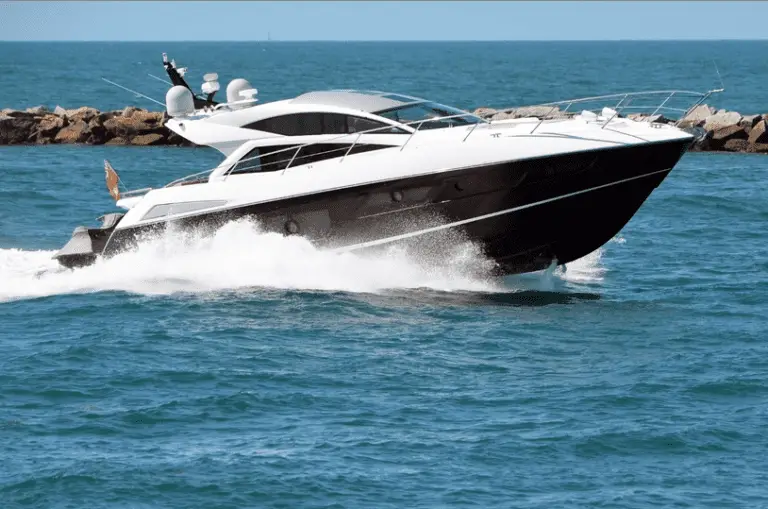
Cabin Cruiser: The Ultimate Guide (2024)
Passengers: Maximum 10Length: 20-40 FeetTrailerable: YesBest for: Day Cruising & Overnight TripsPrice Range: $100,000-$500,000Propulsion: 2+ Outboard Engines Many boaters want…
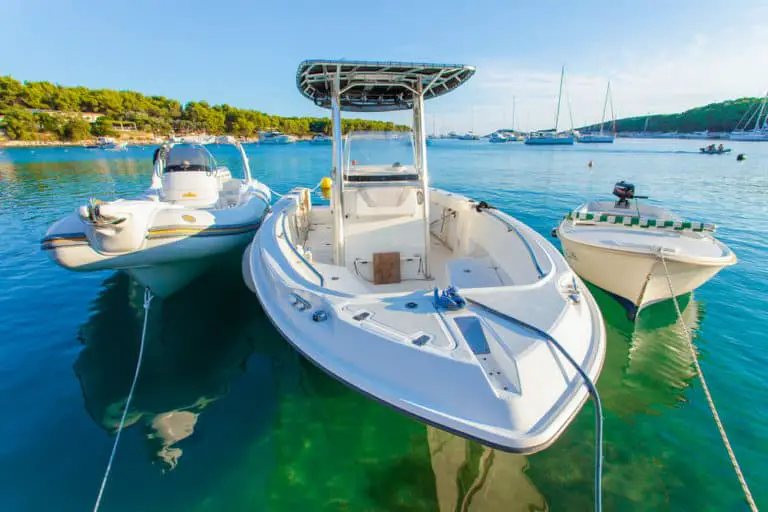
Types of Boats: The Ultimate Guide (2024)
When taking into consideration the different types of boats that navigate the fresh and saltwater bodies of the Earth, the…
Lights and shapes

Definitions
- Masthead light means a white light placed over the fore and aft centreline of the vessel showing an unbroken light over an arc of the horizon of 225° and so fixed as to show the light from right ahead to 22.5° abaft the beam on either side of the vessel.
- Sidelight means a green light on the starboard side and a red light on the port side each showing an unbroken light over an arc of the horizon of 112.5° and so fixed as to show the light from right ahead to 22.5° abaft the beam on its respective side. In a vessel of less than 20 metres in length the sidelights may be combined in one lantern carried on the fore and aft centreline of the vessel.
- Sternlight means a white light placed as nearly as practicable at the stern showing an unbroken light over an arc of the horizon of 135° and so fixed as to show the light 67.5° from right aft on each side of the vessel.
- Towing light means a yellow light having the same characteristics as the sternlight.
- All-round light means a light showing an unbroken light over an arc of the horizon of 360°.
- Flashing light means a light flashing at regular intervals at a frequency of 120 flashes or more per minute.
Colour legend
Power-driven vessel underway
A power-driven vessel underway shall exhibit:
- a masthead light forward;
- a second masthead light abaft of and higher than the forward one; except that a vessel of less than 50 metres in length shall not be obliged to exhibit such light but may do so;
- sidelights;
- a sternlight.
|
| ||
|
|
|
|
| Abeam, port side | Ahead | Astern |
|
| ||
|
|
|
|
| Abeam, port side | Ahead | Astern |
Sailing vessels underway and vessels under oars
A sailing vessel underway shall exhibit:
In a sailing vessel of less than 20 metres in length the lights may be combined in one lantern carried at or near the top of the mast where it can best be seen.
A sailing vessel underway may, in addition to the lights, exhibit at or near the top of the mast, where they can best be seen, two all-round lights in a vertical line, the upper being red and the lower green, but these lights shall not be exhibited in conjunction with the combined lantern.
4 lights configurations sailing
|
| ||
|
|
|
|
| Abeam, port side | Ahead | Astern |
|
| ||
|
|
|
|
| Abeam, port side | Ahead | Astern |
|
| ||
|
|
|
|
| Abeam, port side | Ahead | Astern |
|
| ||
|
|
|
|
| Abeam, port side | Ahead | Astern |
A sailing vessel of less than 7 metres in length shall, if practicable, exhibit the lights prescribed above, but if she does not, she shall have ready at hand an electric torch or lighted lantern showing a white light which shall be exhibited in sufficient time to prevent collision.
A vessel under oars may exhibit the lights prescribed in this Rule for sailing vessels, but if she does not, she shall have ready at hand an electric torch or lighted lantern showing a white light which shall be exhibited in sufficient time to prevent collision.
Sailing and Motoring
A vessel proceeding under sail which has her engine running shall exhibit, forward where it can best be seen, a conical shape, apex downwards. She shall exibit lights according to a power-driven vessel.
|
| Day sign | |
|
|
|
|
| Abeam, port side | Ahead | Astern |
A vessel at anchor shall according to Rule 30 (a) (b) exhibit where it can best be seen:
- in the fore part, an all-round white light or one ball;
- at or near the stern and at a lower level than the light prescribed in Rule 30(a)(i), an all-round white light.
|
| Day sign (1 black sphere) | |
|
|
|
|
| Abeam, port side | Ahead | Astern |
|
| Day sign (1 black sphere) | |
|
|
|
|
| Abeam, port side | Ahead | Astern |
|
| Day sign (1 black sphere) | |
|
|
|
|
| Abeam, port side | Ahead | Astern |
A vessel aground shall according to Rule 30 (d) exhibit the lights prescribed in Rule 30(a) or (b) and in addition, if practicable, where they can best be seen;
- two all-round red lights in a vertical line;
- three balls in a vertical line.
|
| Day sign ( black spheres) | |
|
|
|
|
| Abeam, port side | Ahead | Astern |
A power-driven vessel when towing shall exhibit:
- two masthead lights in a vertical line. When the length of the tow, measuring from the stern of the towing vessel to the after end of the tow exceeds 200 metres, three such lights in a vertical line; Rule 24 ;
- a sternlight;
- a towing light in a vertical line above the sternlight;
- when the length of the tow exceeds 200 metres, a diamond shape where it can best be seen.
| ||
| Abeam, port side | ||
|
|
|
| Ahead, Day sign (diamond shapes) | Ahead | Astern |
| ||
| Abeam, port side | ||
|
|
|
| Ahead, Day sign (diamond shapes) | Ahead | Astern |
| Abeam, port side | |
|
|
|
| Ahead, Day sign (no shapes) | Ahead | Astern |
| Abeam, port side | |
|
|
|
| Ahead, Day sign (no shapes) | Ahead | Astern |
Towing an inconspicuous, partly submerged object
An inconspicuous, partly submerged vessel or object, or combination of such vessels or objects being towed; Rule 24 (g) , shall exhibit:
- if it is less than 25 metres in breadth, one all-round white light at or near the forward end and one at or near the after end except that dracones need not exhibit a light at or near the forward end;
- if it is 25 metres or more in breadth, two additional all-round white lights at or near the extremities of its breadth;
- if it exceeds 100 metres in length, additional all-round white lights between these lights so that the distance between the lights shall not exceed 100 metres;
- a diamond shape at or near the aftermost extremity of the last vessel or object being towed and if the length of the tow exceeds 200 metres an additional diamond shape where it can best be seen and located as far forward as is practicable.
| ||
| Abeam, port side | ||
| ||
| Abeam, port side | ||
| ||
| Abeam, port side | ||
| ||
| Abeam, port side (note that often a fifth round white light in the center is added) | ||
|
| |
| Ahead | Astern | |
| ||
| Day sign, Abeam, port side | ||
Pushing from ahead or towing alongside
When a pushing vessel and a vessel being pushed ahead are rigidly connected in a composite unit they shall be regarded as a power-driven vessel and exhibit the normal lights.
A power-driven vessel when pushing ahead or towing alongside, except in the case of a composite unit; Rule 24 (c) , shall exhibit:
- two masthead lights in a vertical line;
A vessel or object being towed shall exhibit:
- Provided that any number of vessels being towed alongside or pushed in a group shall be lighted as one vessel,
- a vessel being pushed ahead, not being part of a composite unit, shall exhibit at the forward end, sidelights;
- a vessel being towed alongside shall exhibit a sternlight and at the forward end, sidelights.
| |
| Abeam, port side | |
|
|
| Ahead | Astern |
| Abeam, port side |
|
|
| Ahead | Astern |
Fishing – Trawling
A vessel engaged in fishing, whether underway or at anchor, shall exhibit only the lights and shapes prescribed below; Rule 26
A vessel when engaged in trawling, by which is meant the dragging through the water of a dredge net or other apparatus used as a fishing appliance, shall exhibit:
- two all-round lights in a vertical line, the upper being green and the lower white, or a shape consisting of two cones with their apexes together in a vertical line one above the other;
- a masthead light abaft of and higher than the all-round green light; a vessel of less than 50 metres in length shall not be obliged to exhibit such a light but may do so;
- when making way through the water, in addition to the lights prescribed hereh, sidelights and a sternlight.
- when shooting nets, white light over white light (Flag Z by day);
- when hauling nets, white light over red light (Flag G by day);
- When nets are caught on the bottom, red light over red light (Flag P by day).
| Day sign | |
|
|
|
| Abeam, port side | Ahead | Astern |
| Day sign • | |
|
|
|
| Abeam, port side | Ahead | Astern |
| Day sign • | |
|
|
|
| Abeam, port side | Ahead | Astern |
| Day sign • | |
|
|
|
| Abeam, port side | Ahead | Astern |
Trawling in span
When pair trawling, each vessel shows searchlights on water aiming forward ( Flag T by day); Rule 26 (f) (b)ǂ(2)
|
|
| Ahead | Astern |
Fishing, other than trawling
A vessel engaged in fishing, other than trawling , according to Rule 26 (c) shall exhibit:
- two all-round lights in a vertical line, the upper being red and the lower white, or a shape consisting of two cones with apexes together in a vertical line one above the other;
- when there is outlying gear extending more than 150 metres horizontally from the vessel, an all-round white light or a cone apex upwards in the direction of the gear;
- when making way through the water, in addition to the lights prescribed here, sidelights and a sternlight.
| Day sign | |
|
|
|
| Abeam, port side | Ahead | Astern |
Purse seining
Purse Seiners will exhibit two all-round yellow lights in a vertical line, flashing alternately; Rule 26 (f) 3ǂ(iii)
|
|
|
| Abeam, port side | Ahead | Astern |
Constrained by draught
A vessel constrained by her draught / draft may, (and not “shall”!) in addition to the lights prescribed for power-driven vessels, exhibit where they can best be seen three all-round red lights in a vertical line, or as day sign a cylinder, Rule 28
| Day sign (black vertical cylinder) | |
|
|
|
| Abeam, port side | Ahead | Astern |
Not under command
A vessel not under command, sometimes knows as a NUC N ot U nder C ommand." aria-label="Illumination" data-bs-original-title="NUC"> vessel, shall according to Rule 27(a) exhibit:
- two all-round red lights in a vertical line where they can best be seen;
- two spherical shapes in a vertical line where they can best be seen; and
- when making way through the water also normal sidelights and a sternlight (not shown in the examples below).
| Day sign (two black spheres) | |
|
|
|
| Abeam, port side | Ahead | Astern |
|
|
|
| Abeam, port side | Ahead | Astern |
Restricted in her ability to manoeuvre
A vessel restricted in her ability to manoeuvre, sometimes knows as a RAM R estricted in her A bility to M anoeuvre." aria-label="Illumination" data-bs-original-title="RAM"> vessel, except a vessel engaged in mine clearance operations , shall according to Rule 27(b) exhibit:
- three all-round lights in a vertical line where they can best be seen. The highest and lowest of these lights shall be red and the middle light shall be white;
- three shapes in a vertical line where they can best be seen. The highest and lowest of these shapes shall be balls and the middle one a diamond;
- when making way through the water, also a masthead light or lights, sidelights and a sternlight
| Day sign: two black spheres and in the middle a black diamond shape | |
|
|
|
| Abeam, port side | Ahead | Astern |
|
|
|
| Abeam, port side | Ahead | Astern |
Dredging or underwater operations
A vessel engaged in dredging or underwater operations, when restricted in her ability to manoeuvre; Rule 27(d) , shall exibit
- two all-round red lights or two balls in a vertical line to indicate the side on which the obstruction exists;
- two all-round green lights or two diamonds in a vertical line to indicate the side on which another vessel may pass; and
- when at anchor (or not making way), the lights or shapes prescribed in this section instead of the lights or shapes prescribed in Rule 30
|
|
|
| Ahead, day signs | Ahead | Astern |
|
|
|
| Ahead, day signs | Ahead | Astern |
|
|
|
| Ahead, day signs | Ahead | Astern |
Small diving vessel
or
| Day signs | |
|
|
|
| Abeam, port side | Ahead | Astern |
A vessel engaged on pilotage, according to Rule 29 , duty shall exhibit:
- at or near the masthead, two all-round lights in a vertical line, the upper being white and the lower red;
- when underway, in addition, sidelights and a sternlight; as shown in the example below.
|
|
|
| Abeam, side | Ahead | Astern |
Hovercraft, hydrofoil ferry
An air-cushion vessel when operating in non-displacement mode shall, besides a masthead light forward, (plus a masthead light abaft if longer than 50 m) sidelights and a sternlight, exhibit an all‑round flashing yellow light (faster than 2 flashes per second). Rule 23(b)
Also a hydrofoil ferry or high speed catamaran when acting as ferry is often allowed under local regulations to exhibit an all-round flashing yellow light.
|
|
|
| Abeam, port side | Ahead | Astern |
Minesweeper
A vessel engaged in mine clearance operations shall in addition to the lights prescribed for a power-driven vessel, or to the lights or shape prescribed for a vessel at anchor, exhibit three all-round green lights or three balls. One of these lights or shapes shall be exhibited near the mast head and one at each end of the fore yard. These lights or shapes indicate that it is dangerous for another vessel to approach within 1000 metres of the mine clearance vessel. Rule 27(f)
|
|
|
| Ahead, day signs (3 black spheres) | Ahead | Astern |
See all chapters
Course overview Chapter 1 – Positions Chapter 2 – Nautical chart Chapter 3 – Compass Chapter 4 – Plotting and piloting Chapter 5 – Plotting and piloting – Advanced Chapter 6 – Tides Chapter 7 – Tide prediction Chapter 8 – Currents Chapter 9 – Navigation aids Chapter 10 – Lights and Shapes

Navigation Lights
- You are required to display the appropriate lights at night or during times of reduced visibility.
Navigation lights are used to prevent collisions at night or in times of reduced visibility, and are an essential tool in keeping you and your vessel safe. Nav lights allow you to see other nearby vessels, and allow other vessels to see you.
Nav lights also provide information about the size, activity, and direction of travel. By understanding the characteristics of Nav lights, you can determine an appropriate course of action as you approach another vessel.
On any vessel, navigation lights have a specific color, (white, red, green, yellow, blue), arc of illumination, range of visibility, and location, as required by law and regulations. For the purposes of this course, we will concentrate on pleasure boats under 65 feet in length. Knowledge of navigation lights is important to a small-boat skipper for separate, but important, reasons.
- You are legally responsible for displaying lights of the proper color, intensity, location and visibility on your boat.
- Knowing the type and heading of another boat.
Legal Requirements
Vessels are required to show the proper navigation lights from sunset to sunrise in all weather conditions, good and bad. During these times, no other lights that could be mistaken for lights specified in the Rules of the Road can be displayed, nor any lights that impair the visibility or distinctive character of navigation lights, or interfere with the keeping of a proper lookout. The Rules also state that navigation lights must be shown in conditions of reduced visibility, and may be shown at other times considered necessary.
It's Your Responsibility
It is the responsibility of the owner/operator of a vessel that she show the proper navigation lights for her size and the waters in which she is operating. It is not the responsibility of the manufacturer, importer, or selling dealer. Many boats are delivered with lights that do not meet legal requirements with respect to technical characteristics or placement on the vessel. Remember also, that the angles of visibility must be met when the boat is underway-if your boat rides at a significant bow-up angle, take that into consideration when installing and/or checking your lights.
Navigation Lights for Powerboats
Power driven vessels underway shall exhibit a masthead light forward, sidelights and a stern light. Vessels less than 12 meters in length may exhibit an all around white light and side lights. Power driven boats on the Great Lakes may carry an all around white light in stead of a second masthead light and stern light combination.

Sidelights - Colored lights - red on port and green on starboard - showing an unbroken arc of the horizon of 112.5 degrees, from dead ahead to 22.5 degrees abaft the beam on each side.
Combination lights - Sidelights may be combined in a single fixture carried at the centerline of the vessel.
Stern light - A white light showing over an unbroken arc of the horizon of 135 degrees, centered on dead astern.
Navigation Lights for Sailing
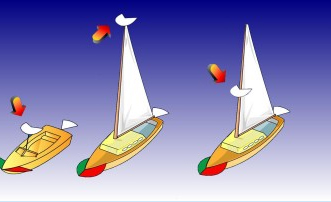
A sailing vessel of less than 7 meters in length shall, if practicable, exhibit regular navigation lights, but if not practical, she shall have ready at hand an electric torch or lantern showing a white light which shall be exhibited in sufficient time to prevent collision.
Diving Lights
Another light display that you may see in resort areas, or waters that have wrecks or reefs, is the night diving configuration. This has three vertical masthead lights, that have a red-white-red sequence. You must maintain a good distance from these vessels, and you should also be aware that there may be divers near you.
Interpreting what you see

It's great that you're learning the basics of lights - what is required and when they're required. But, this in only the beginning. You must also learn how to interpret the navigation lights that you see when you are underway at night- and for your safety-learn it well.
For instance, if you see a vessel approaching that shows a light pattern such as the ones to the right, you immediately know that you are in a crossing situation, and that you must yield to the other vessel - that's why it is red.

Seeing a green light over a white light indicates a fishing vessel actively trawling. You not only need to avoid the vessel, but you also need to remember that it could potentially have a very large net deployed that you will also need to avoid.
And there are numerous other lights and combinations of lights that you must be able to instantly recognize - the lights for a sailboat that is privileged over a motorboat, the special lights of various fishing vessels, a dredge or a vessel not under command. Study the requirements for navigation from the viewpoint of a "looker" as well as a boat owner.

Ultimate Guide To Marine Navigation Lighting
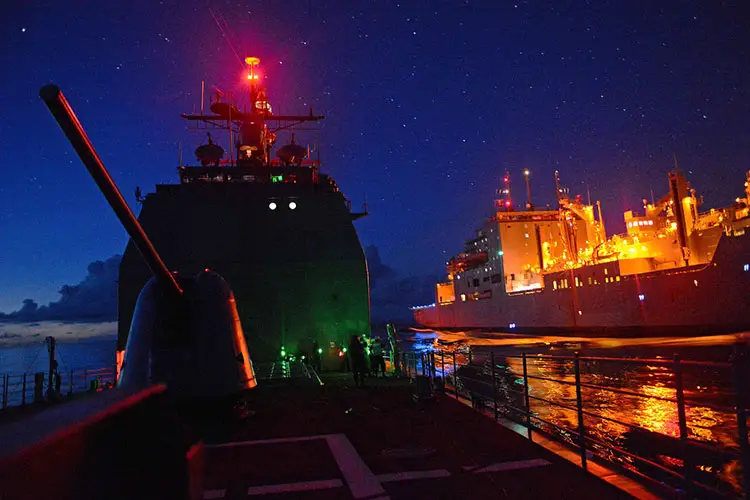
If you drive a car or even ride a bicycle, you might be well aware of the necessity of lighting systems (though in the second case the word ‘system’ doesn’t quite apply) for the safety of you and the people around you. The thing applies just as well for ships. But since they are much larger than a car, the lighting system or navigation lights on ships is a little bit more complicated as well. Marine navigation lighting is also one of the most critical aspects of nautical studies.
It is mandatory for boats of all sizes to have a navigation system . This is to make sure that the chances of any significant accident are minimized. The United States introduced the system in 1838, and the United Kingdom followed suit. Before being internationally adopted in 1897 suitable guidelines were established by the International Maritime Conference which was established in 1889. Three colors were chosen that were to be used for the light colors. They were red, green and white. This was based on a set of rules specified by the US and are followed around the world to this date.
This article discusses the different rules and regulations of using navigation lights, their importance, and also some basic marine navigation lighting systems along with their positions and ranges.
Marine Navigational Lights, Rules and Regulations
A standard pattern of marine navigation lighting is followed for the identification of both the vessel as well as the IALA buoyage system at night. If you are required to move from sea to a channel you need to have a list of all the IALA as well as the other fixed navigational lights that are visible on entering the channel. This includes distant lighthouses as well.
If you also make a note of the inland features like the radio and television transmitter masts it will benefit you because they act as good navigational aids due to their height and warning lights.
The helmsman should not be using any bright light source in the cockpit area and should rather take the aid of red lights and very dim white lights in the galley and navigation area. This is because he needs to preserve his night vision so that he can accurately interpret both the buoyage marine navigation lights as well as the boat navigation lights of other vessels.
The nautical almanacs contain the details of each and every visible maritime light signal coming from navigational markers that are both inside and outside the channel.
All the details about any particular light can be found in a published list or on a marine navigational lights chart: its color, period, and in some cases even the elevation and range of the beacon. Use the chart to keep a tag on the lights you are passing by putting a tick mark on the lights that you are about to pass and as the boat sails past, the tick is checked.
You will get two visual clues to figure out how far you are away from a buoy. The light will elevate from the horizon at 0.5 nm and at about 200m, the light will reflect on the surface.
Position of Boat Navigation Lights
Most of the variations that can be found in the different vessels can be read about in most almanacs. At the very basic level, a vessel needs to show a red light to port and green light to starboard. Depending on the size of the vessel, one or more colored or white lights are used as well.
For vessels that are 12 ft in length or shorter, the navigation lights must be visible from a range of one nautical mile and for the ones that are longer than 12 meters the required visibility range is 2 nautical miles. From 5 degrees above to 5 degrees below the horizontal happens to be the required minimum intensity in a vertical sector.
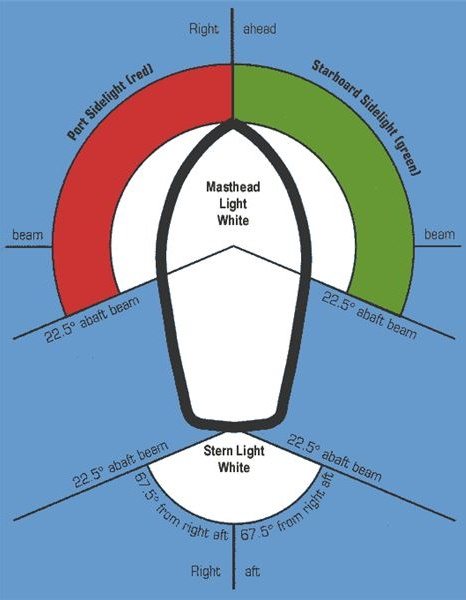
International Navigation Rules state that the boat navigation lights should be placed above the uppermost continuous deck. In case separate fixtures are used for the red and green sidelights, the masthead or all-round white light is placed as close as possible to the vessel’s fore and aft centerline. The masthead or all-around light needs to be positioned at least 1 m or 3.3 ft above the sidelights.
Following are the basic positions of navigational lights. We will discuss the same in greater detail ahead.
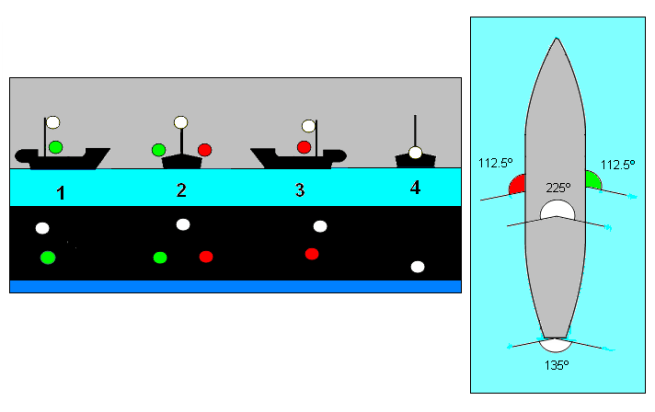
Also read: What Is A Marine Sextant?
Boat Navigation Light Regulations
Several rules and specifications are related to the type, size, layout, arc, and distance of visibility of boat navigation lights used by all vessel types which are collectively known as the International Regulations for Preventing Collisions at Sea or COLREGs . The navigational lights used are known as ‘COLREG lights and shapes. A boat might be anchored or underway, under sail or power, or fishing or trawling. These various situations can be communicated through multiple combinations of boat navigational lights.
In addition to the primary navigation lights, vessels may also display one or more steaming lights. These lights are very useful for it gives details about the various aspects of the ship like whether it is in the sail or under power, the direction in which it is going and, in some cases, even the size of the vessel. If a ship is engaged in a specific task that might involve certain restrictions, that too can be indicated with some extra boat lights.
Always maintain the lighting system and display the correct navigation light combination to make other vessels in the vicinity aware of your course and state as to whether your vessel is under power or not. If you follow this a considerable amount lowers the chances of a collision. Here is a list that you might use to familiarise yourself with the basics of the lighting system.
- Basic Navigation Light White Light : Small dinghies that are 7m or less in size are required to carry a torch having a white light that can be flashed when needed.
- All-Round White Light: An all-round white light is expected to be displayed by a small boat, up to 7ft long that is under power and can go beyond 7 knots of speed. This light must be visible at an angle of 360 degrees and from two miles away. An all-around white light is also used when the boat or vessel is at anchor but not at a designated anchoring area. This is to make sure that the ship is visible to all the nearby ships to avoid any accidents.
- Stern and Combined Side Lights : A stern light is a white light that is installed at the end of a boat. A vessel that is over 7 m or 23 ft in length is expected to show red and green sidelights when sailing. Each of these lights needs to cover an arc of 112.5°. The sidelights may be combined in one lantern at the bow when below 25 m or 65 ft. The white stern light can be seen over an arc of 135°. These lights need to be visible from a distance of a mile and need to be placed 39 inches below all white lights for boats of lengths equal to or less than 12 ft.
- Masthead Light : A combination of sidelight and stern light in a tricolor combination may be used sailing yachts of heights 20 m or lower. A masthead light is required by vessels of lengths between 39.4 ft and 65.6 ft. It is placed in the masthead whose height provides excellent visibility. Still, stern lights and sidelights should be fitted separately in case of or use under power along with steaming light. This kind of light needs to be visible across an angle of 225 degrees and from a minimum distance of 2 miles.
- Separate Lights : The displaying of the tricolor masthead light is not allowed in the case of yachts that are longer than 20 m or 65 ft. Instead, they use them separately. Often on large sailing vessels, these all-around, red over green lights are present. These red and green sidelights need to be visible from a distance of one mile and across an angle of 112.5 degrees.
- Steaming Lights Combined Lights : A combination of the masthead and stern light are used in the case of power crafts that are less than 20 m or 65 ft in length. The arrangement is present at the bow.
- Single Steaming Light : Visible over a 225 degrees arc, a masthead steaming light is used by power-driven vessels that are up to 50 m or 160 ft long. Separate stern lights and sidelights are used in case of a length exceeding 20 m or 65 ft.
- Two Steaming Lights: Power-driven vessels that span over 50 m or 160 ft in length display two masthead steaming lights. The forward light placed lower than the aft light with both of them being visible over an arc of 225° with the sidelights and separate stern light.
The area of the nautical lighting system is a precise business and requires some amount of study and a good deal of responsibility. It is because its application forms a core element in safe marine navigation.
Similar Posts
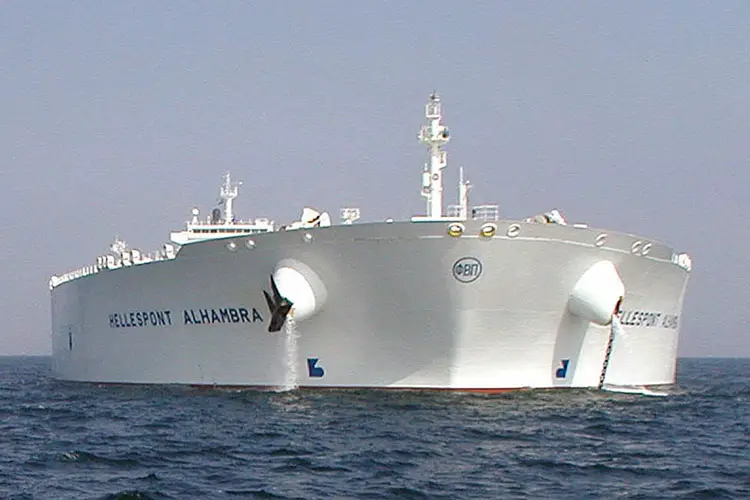
What Are TI Class Supertankers?
The TI class supertankers is a class of the four largest ships in the world by displacement, gross tonnage, and deadweight tonnage. They are owned by Tankers International L.L.C. The TI in the name stands for the same (Tankers International). These were the first ultra-large crude carriers built in nearly the past three decades. They…


Major Container Ports in the World
Container ports (also known as container terminals) are specialized marine port facilities that focus on container shipping and transshipment. Terminals are crucial in the global logistics and supply chain business because they determine the speed at which commerce and trade may occur. Terminals that are efficient and streamlined run smoothly, minimizing ship wait times and…
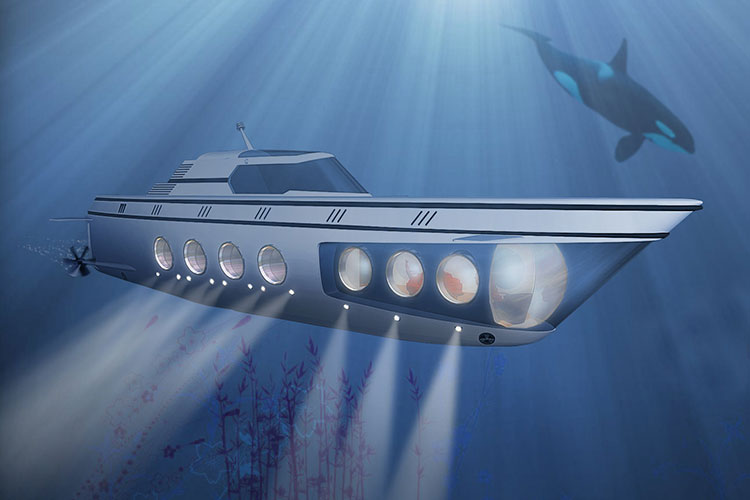
Top 15 Personal Submarines To Travel Ocean In Style
A submarine is a vessel that is capable of operating underwater independently. Most of the time it is used by the government of different countries for national protection and during wartime. Submarines are some of the rarest and the most fascinating marine vessels in the world. Unlike other ships like yachts, submarines are not very…
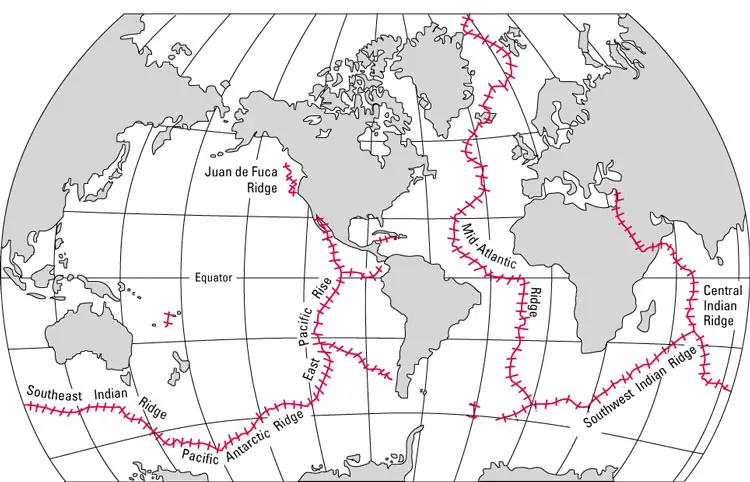
What is the Mid-Ocean Ridge?
The mid-ocean ridge is a continuous range of mainly undersea volcanic mountains that encircles the globe. The mid-ocean ridge has the distinction of being the mountain range that covers the largest area. Facts about the Mid-Ocean Ridge You can visualize the mid-ocean ridge as a baseball seam wrapping the Earth for more than 65,000 Km….

Best Anti-Seizure Compounds Used in Ships
Anti-seizure compounds prevent seizure of metals parts in ships and vessels due to marine growth, corrosion, and caustic environment on ship hulls. Common Anti-Seizure Compositions in Maritime Applications Anti-seizure compounds, also known as antifouling coatings, play a vital role in preventing marine fouling or growth on ship hulls. 1) Copper-Based Compounds Coatings based on Copper-Based…
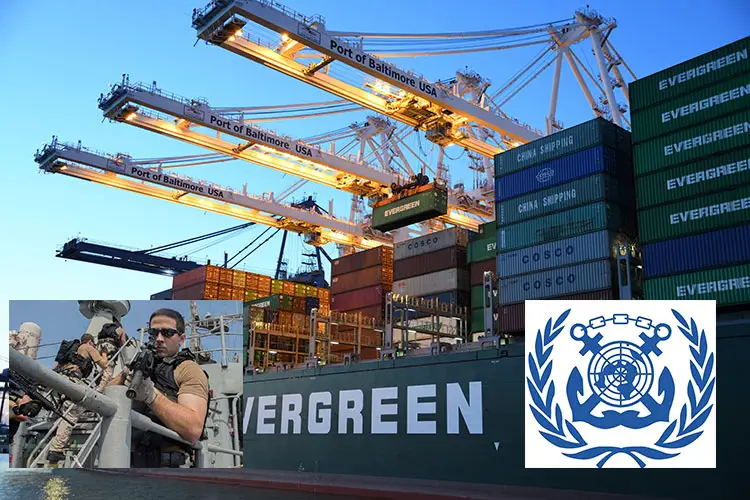
ISPS Code: History, Objectives, Levels, and Requirements of ISPS Code
What is ISPS Code? ISPS Code or the International Ship and Port Facility Security Code is a framework that provides ships and port facilities with guidelines to function when the ship’s security is threatened due to acts of terrorism. The International Maritime Organization under the Safety of Life at Sea Convention decided to update the…
Leave a Reply Cancel reply
Your email address will not be published. Required fields are marked *
Save my name, email, and website in this browser for the next time I comment.
This website uses cookies to improve your experience. We'll assume you're ok with this, but you can opt-out if you wish. Read More

- Pontoon Boats
- Personal Watercraft
- nauticalknowhow
- Nautical Knots
- Tools and Calculators
Understanding Boat Navigation Lights
Boat navigation lights are essential when you’re out on the water. They’re essential, but it’s easy to misunderstand their uses and correct placements.
If you don’t know the correct placement for your stern lights or know what type of navigation light you need on your mast, don’t worry: we’re here to help. Below, we’ve got an overview of everything you need to know about boat navigation lights: what type of navigation lights you need, where to put them, and why you need to use them.
So without further ado, let’s learn more about boat navigation lights.
What navigation lights are required on a boat?
The U.S. Coast Guard Navigation Rules, International-Inland encompasses lighting requirements for every description of watercraft. The information provided there is intended for powerboats and sailing vessels less than 20 meters. The various options are illustrated.
The U.S. Inland Rules apply inside the demarcation lines at the entrances to inlets, bays, rivers, etc. The demarcation lines are shown on coastal charts as magenta dashed lines. Once outside of the demarcation lines, International Rules apply.
Powered Vessels
Power boats less than 20 meters shall exhibit navigation lights as shown in Figure 1. (Note: 2 masthead lights are optional for vessels under 50 meters. Vessels over 50 meters will display two masthead lights.)
Vessels of less than 12 meters in length, may show the lights in either Figure 1 or Figure 2.
Powerboats less than 7 meters whose maximum speed cannot exceed 7 knots may exhibit an all-round white light, and if practicable sidelights instead of the lights prescribed above, in international waters only.
Sailing Vessels and Vessels Under Oars
Sailing vessels less than 20 meters may exhibit the navigation lights shown in Figures 3 or 4.
Another option for sailboats is to use a single combination lamp at the top of the mast as shown in Figure 5.
Sailing vessels less than 7 meters may carry an electric torch or lit lantern showing a white light to be displayed in time to prevent collision (see Figure 6 – left picture).
If possible, the lights prescribed for sailing vessels less than 20 meters should be displayed.
Vessels under oars may display the lights prescribed for sailing vessels, but if not, must have ready at hand an electric torch or lighted lantern showing a white light to be displayed in time to prevent collision (see Figure 6 – right picture).
Small boats can benefit from using a temporary LED light with a suction cup attachment if permanent fixings aren’t possible.
Shapes and Lights
To alert other vessels of conditions that may be hazardous, there are requirements to display lights at night and shapes during the day.
Anchored Vessels
Powered vessels and sailing vessels at anchor must display anchor lights. An anchor light for a boat less than 50 meters in length is an all-around white light visible for 2 miles exhibited where it can best be seen (see Figure 7).
Vessels at anchor shall exhibit forward where best seen, a ball shape (see Figure 8).
Vessels less than 7 meters are not required to display anchor lights or day shapes unless anchored in or near a narrow channel, fairway or anchorage, or where other vessels normally navigate.
Anchor lights are not required on vessels less than 20 meters, anchored in special anchorages in inland waters designated by the Secretary of Transportation.
Sailing Vessels Under Power
Vessels under sail also being propelled by machinery, must exhibit forward where best seen, a conical shape with the apex pointing down (see Figure 9).
Vessels less than 12 meters are not required to exhibit the dayshape in inland waters.
Sailing vessels operating under machinery, or under sail and machinery are considered as powered boats and must display the lights prescribed for a power-driven vessel.
Restricted Maneuverability
The Navigation Rules require vessels restricted in their ability to maneuver to display appropriate day shapes or lights. To meet this requirement, recreational vessels engaged in diving activities may exhibit a rigid replica of the international code flag “A” not less than one meter in height or at night display the navigation lights shown in Figure 10.
This requirement does not affect the use of a red and white divers flag which may be required by state or local law to mark a diver’s location. The “A” flag is a navigation signal indicating the vessel’s restricted maneuverability and does not pertain to the diver.
Navigation lights should be checked prior to departing the dock and you should always carry spare bulbs. The USCG doesn’t care if they were working when you left, only that they are working when required.
Where do navigation lights go on a boat?
The current navigation light requirements are found in the Navigation Rules, International-Inland, and in Parts 81, 84, and 89 of Title 33, Code of Federal Regulations . They’re easy to find, but many sailors and boat manufacturers do not have a good understanding of the rules governing the proper installation of navigation lights. To help clear up any misunderstandings here’s all you need to know:
Sidelights that are installed in the contour of the bow without providing a mounting surface tooled to be parallel with the fore and aft centreline of the boat are not in compliance with the Inland or International Navigation Rules. Depending on the breadth of the boat near the bow and how far aft from the vessel’s stem the lights are mounted, this shift can be more than 20 degrees in some cases. Installing the fixtures too far aft of the vessel’s stem may result in the sidelights not being visible from a position dead ahead.
Another factor in the proper installation of sidelights is that they must maintain their required minimum intensity in a vertical sector from 5 degrees above to 5 degrees below the horizontal. They must also maintain at least 60 percent of their minimum required intensity from 7.5 degrees above to 7.5 degrees below the horizontal. Installing flush-mounted sidelights, designed to be mounted to a vertical surface in the hull contour, without providing a mounting surface tooled to be vertical, shifts the vertical coverage sector. This also results in non-compliance with the Inland or International Navigation Rules.
Additionally, most of these flush-mounted sidelights are installed below the vessel’s rub rail. International Navigation Rules require that sidelights be installed above the uppermost continuous deck. Therefore, this configuration would not be in compliance with International Navigation Rules.
When separate red and green sidelight fixtures are used, the masthead light or all-round white light, whichever configuration is installed, must be located as close as practical to the vessel’s fore and aft centerline. For vessels less than 12 meters in length, the masthead light or round lights may be displaced from the fore and aft centerline providing that the sidelights are contained within a common fixture and mounted on the vessel’s fore and aft centerline. The masthead or round lights must be installed at least one meter (3.3 ft.) above the sidelights.
Which navigation lights are you required to display when anchoring your boat for the night?
Boating at night (or in reduced visibility) can present some special challenges. Not only is your depth perception lessened, but bright lights on the shore can also cast misleading reflections on the water and if you wear glasses, or worse yet bifocals, you simply don’t see as well at night as you do during the day.
It is not only important that you be able to identify other vessels operating in your proximity, it is equally important that other vessels see you. Most recreational vessels are less than 30 feet in length and, according to the Rules of the Road, shall be equipped with navigation lights.
These lights not only have a certain arc through which they can be seen but must be seen from a minimum distance. The following lighting requirements are for recreational vessels less than 12 meters in length. (approximately 39.4′)
| | ||||
| Masthead Light | 225º | White | 2 | |
| Starboard Side Light | 112.5º | Green | 1 | |
| Port Side Light | 112.5º | Red | 1 | |
| Stern Light | 135º | White | 2 |
The arc of the lights and color allows you to determine the direction a boat is moving. How good are your boat’s lights? You should test them to check your nighttime visibility, or you might land yourself in hot water with the Coast Guard.
Whether on a trailer or at the marina, switch on your lights and see how well they can be seen. Walk away from the boat or row away, if you are at anchor or at a mooring, and see how visible the lights are as you move further away. How easy are they to see against the background of lights onshore?
Does your stern light shine dead astern over the required 135º arc or does it shine to one side or up or down? Can it be seen from the required 2 miles and why is that important? As an example, let’s say that your stern lights can only be seen for 1/2 mile. You are underway at 8 knots and a large ship is approaching at 15 knots. The ship is only 4 minutes away from a collision with you. By the time the ship “might” see you, identify the light, and decide on how to move, it is too late. A ship traveling at 15 knots may take miles to stop.
Look at the stern lights again, as you move from the stern toward the bow, does the stern light “disappear” as the sidelight “appears”? The stern light should disappear and sidelight appear at 22.5º abaft the beam. If you don’t see the green starboard sidelight or the red port side light when the stern light disappears there is a problem with the arc of one or all these lights. This means that if another boat were approaching you at the angle where no lights are seen there is an increased risk of collision.
If both the stern lights and side lights are seen brightly at the same time you still have a problem. A boat approaching won’t know whether they are overtaking or crossing and whether they should give-way or stand-on.
You should also check to make sure that your masthead light disappears at the same time each side lights disappear and they both disappear when the stern light appears.
Check your sidelights from dead ahead. You should see both red and green. However, by moving toward one side just 1-3º you should then see only one light. If you still see two lights, an approaching boat won’t be able to tell which direction you’re are going.
It is very important to be seen from a distance but also for an approaching boat to be able to determine your direction of travel.
When boating at night remember the following: “When two lights you see ahead, turn your helm and show your red”.
About Chris
Outdoors, I’m in my element, especially in the water. I know the importance of being geared up for anything. I do the deep digital dive, researching gear, boats and knowhow and love keeping my readership at the helm of their passions.
Categories : nauticalknowhow
Robert Hogward on September 12, 2021
Thanks for writing this post. I can either place them on the exterior or interior for decorations. Placing them on the exterior side is helpful when I go fishing and indulging in other night activities in the water.
Dalton Bourne on July 26, 2022
We love the lights! We put lights from Seaponer on my Jon boat right above the water line and use them for night fishing! The amount of brightness it offers is an assurance of my boat’s being seen clearly during the night. At the same time, the LED lights don’t consume too much energy, leading to a life span of up to 50,000 hours.
Leave a Reply Cancel reply
Your email address will not be published. Required fields are marked *
Save my name, email, and website in this browser for the next time I comment.
More in nauticalknowhow

How to Tie a Boat to a Dock

How to Clean a Boat Cover

Everything You Need to Know About Your Boat’s Bilge Pump

4 Ways to Tie Your Boat Shoes

The People’s Poncho Review and Ratings

Oru Lake Kayak Review

What Is A Gunwale?

131 of the Best Hawaiian Boat Names

167 Patriotic Boat Names
About boatsafe.
Established in 1998, BoatSafe is your independent guide into the world of boating, fishing, and watersports. We provide expert insights and detailed guides to help you find products tailored to your needs and budget.
Contact Boatsafe
- Address: 4021 West Walnut Street. Rogers, AR 72756
- Phone: (479)339-4795
- Email: [email protected]
Site Navigation
- How We Test
- Corrections Policy
- Privacy Policy
- Terms & Conditions
- Editorial Policy
- Affiliate Disclosure
Our Reviews

All content is © Copyright 2024. All rights reserved.
- New Sailboats
- Sailboats 21-30ft
- Sailboats 31-35ft
- Sailboats 36-40ft
- Sailboats Over 40ft
- Sailboats Under 21feet
- used_sailboats
- Apps and Computer Programs
- Communications
- Fishfinders
- Handheld Electronics
- Plotters MFDS Rradar
- Wind, Speed & Depth Instruments
- Anchoring Mooring
- Running Rigging
- Sails Canvas
- Standing Rigging
- Diesel Engines
- Off Grid Energy
- Cleaning Waxing
- DIY Projects
- Repair, Tools & Materials
- Spare Parts
- Tools & Gadgets
- Cabin Comfort
- Ventilation
- Footwear Apparel
- Foul Weather Gear
- Mailport & PS Advisor
- Inside Practical Sailor Blog
- Activate My Web Access
- Reset Password
- Customer Service

- Free Newsletter

Aluminum Cruisers: The Basics for First-Time Buyers

Marshall Sanderling 18: Used Boat Review
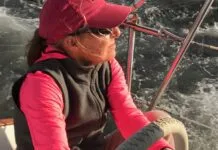
Affordable Cruising Sailboats, Continued

Maine Cat 41 Used Boat Review

Best Crimpers and Strippers for Fixing Marine Electrical Connectors

Thinking Through a Solar Power Installation

How Does the Gulf Stream Influence our Weather?

Can You Run a Marine Air-Conditioner on Battery Power?
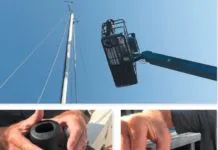
Need a New Headsail Furler? Here’s What’s Involved

Master the Sailing Basics: Never Stop Learning the Little Things
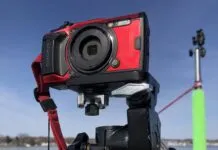
How to Mount Your Camera on Deck: Record Your Adventures with…

Un-Stepping the Mast for America’s Great Loop

Sinking? Check Your Stuffing Box

The Rain Catcher’s Guide

How to Change Your Engine Mounts

Keeping Water Clean and Fresh

Vinyl Boat Lettering DIY Application and Repair

Those Extras you Don’t Need But Love to Have

Three-Model BBQ Test
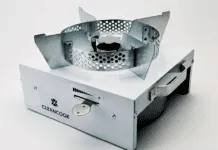
Alcohol Stoves— Swan Song or Rebirth?

UV Clothing: Is It Worth the Hype?

Preparing Yourself for Solo Sailing

How to Select Crew for a Passage or Delivery

Preparing A Boat to Sail Solo

Dear Readers

Chafe Protection for Dock Lines

Waxing and Polishing Your Boat

Reducing Engine Room Noise

Tricks and Tips to Forming Do-it-yourself Rigging Terminals
- Safety & Seamanship
- Sails, Rigging & Deck Gear
Navigation Lights: Hella and Aqua Signal Shine Brightest
Three of the four major light manufacturers serve up superlative lights-many lights even satisfied coast guard requirements at our engine-off test voltage. still, a variation of the golden rule applies: shine unto others as you would have them shine unto you..
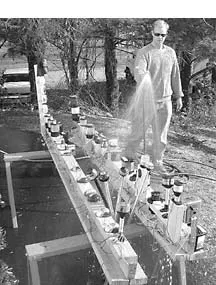
Most boats, new or used, come with navigation lights installed-and that’s about all that we care about them until one of them fails. Sometimes the failure is in the light itself, sometimes in the wiring leading to it. The fix is usually simple enough to perform mechanically or electrically, but there’s an inconvenience factor that varies from minor to major, depending on where the failure occurs. If a light goes out on the bow pulpit or cabinside, it’s no big deal. If it goes out at the top of the mast, it’s a royal pain. After the first of these pains, you begin to pay more attention to how the lights are mounted and sealed against the elements, and how the wiring is led and protected from chafe and crimping. And you begin to consider the design, construction, and materials of the lights themselves.
The other occasional concern we have with these lights is how they actually perform. Again, most of the time we take them for granted-the waters are less crowded at night, tense crossing situations are relatively infrequent, and there’s usually plenty of time to study a developing situation and make a course change if necessary. In times like that, you might feel that you have your lights on just to obey the law, nothing more.
However, when you find yourself negotiating a busy harbor or channel at night, or the visibility isn’t what it could be, or you’re traveling along a shore twinkling with houselights and floodlights and car headlights and all sorts of other distractions, you instantly appreciate running lights that are clear and bright and that stand out against the background-and you wonder just how visible yours are to others.
There are minimal visibility requirements set by the US Coast Guard-see the sidebar on pages 8-9 for the basics. But note that there’s no rule prohibiting a boat from carrying bigger, better lights than those that satisfy the minimum, as long as they don’t shine so brightly or cause so much glare that they interfere with the helmsman’s vision.
Obviously, navigation lights exist to help prevent collisions. As such, they’re important pieces of safety gear. If you suspect the ones aboard your boat are feeble, either in form or function, consider replacing them. It’s to help with your decisions on that score that we’ve done this evaluation.
Light Basics The point of navigation lights underway is to show a 360-degree circle of light at all times, including red and green sidelights, each visible through 112.5 degrees, and a stern light, visible through 135 degrees to complete the circle. On boats under 20 meters, sidelights can be combined in one unit (a bi-color light).
Powerboats underway are required to show sidelights and 360 degrees of white light. The usual configuration is sidelights, a sternlight, and a masthead light. If the boat is under 12 meters in length, an all-round white light can be substituted. The all-round white light also serves as an anchor light, required from sunset to sunrise in areas that are not designated anchorages.
On a sailboat under 20 meters, all three lights can be combined in a tri-color light at the masthead, but only when sailing; under power, a sailboat must show a 360-degree circle of white light, either in an all-around light at the masthead, or in a combination of stern light plus a 225-degree masthead light. (The masthead light is confusingly named, since it’s rarely located at the top of the mast. Usually it’s about three-quarters of the way up. On powerboats it’s usually mounted on a short pole.)
We’re referring here to boats between 7 and 20 meters in length. There are variations on the rules outside that range, but we don’t have enough paper to cover them all.
What Was Tested The last time we tested navigation lights was in 1993-the results were published in the July 1 issue of that year. We evaluated 70 lights then, and as it turns out we looked at 70 lights this time around, too, although there were some variations-missing were lights from Wilcox-Crittenden, which no longer makes them, and Forespar’s ML2 combination masthead/deck light, recommended in ’93 and still on the market (which we forgot). Otherwise we collected all the lights in the major catalogs and chandleries, including individual and bi-color sidelights, tri-color lights, sternlights, masthead lights, and all-round white lights. The lights were represented by four manufacturers-Aqua Signal, Attwood, Hella Marine, and Perko.
How We Tested Our evaluations were simple: All the lights were mounted on pine planks and properly bedded and sealed. On a chilly October night with virtually unlimited visibility, we took the planks to a local beach parking lot with little ambient light around, and set them on sawhorses. With our observer (the keenest-eyed among us) anchored offshore at one nautical mile, we powered each light individually, and the observer called in his impressions via cell phone.

We had noted that the American Boat and Yacht Council (ABYC), in their specs for the Intensity/Nominal Voltage Test for nav lights, says that the test fixture “shall be tested for its ability to meet minimum required luminous intensity… when operated at its intended nominal system voltage. This shall be a single reading at a point selected by the fixture manufacturer.”
That leaves the manufacturers quite a bit of wiggle room to balance bulb characteristics against input voltages in order to achieve their visibility requirements.
We decided to see how the lights would do in less forgiving circumstances. For power we used a truck-mounted 4-D deep-cycle marine battery monitored throughout the test at 12.4 volts-a standing voltage that would approximate power to the lights with the boat’s engine off and the supply battery in reasonably good shape, but with one or two other power demands being made on it at the same time-nav instruments and an interior light or two.
Obviously, with the engine running and an alternator output of 13 volts or more, the lights will shine brighter-so the ratings in our chart should be seen as pessimistic across the board.
After looking at all 70 lights and communicating his ratings at 1 nm, the observer moved out to 2 nm and the whole procedure was repeated. The planks were adjusted as necessary to give the observer the full proper view of each type of light. Occasionally it appeared to the testers on shore that the powered light was mounted close enough to its neighbor that it was picking up an extra reflection. In those cases they inserted a brown clipboard between the lights. It didn’t seem to make much difference.
After the visibility tests, all the lights were sprayed forcefully with a gardenhose and left to sit for two weeks. Then they were sprayed again and checked for continued function. All lights functioned fine after both inundations.
Finally, we studied the lights for quality of construction, mounting methods, and ease of maintenance. Comments on these topics are included in the main chart (see bottom).
We didn’t measure each lens for its required cuto-off angle (e.g. 112.5), reasoning that even if we were persnickety enough to find lights that were a degree or two off either way, such minor anomalies would be of little consequence on the water.
What We Found The chart provides specifics about the lights and our visibility tests. In general, we found that lights met the minimum visibility requirements at 1 mile, with the exception of two red sidelights-the Aqua Signal 22300-1 and the Attwood 3150R7.
Twenty-two lights, nine of which were rated at 2 nautical miles, were invisible at that distance and at our unforgiving voltage. Again, all lights must meet their Coast Guard requirements when powered at the test voltages allowed their manufacturers.
We should note that Hella Marine’s Model 62149 red sidelight, a 3-nm light, is rated to burn a 29-watt bulb at 13 volts, so it was unfairly underpowered in the test. Maybe it’s just for powerboats.
The fit and finish of the lights varied quite a bit, and those variations are often reflected in the price. Only one light, Perko’s Model 170BMD masthead/decklight combination arrived with an obvious flaw-a 4-mm separation in one side of the plastic housing.
A few lights were quite a bit brighter and more visible than the rest of the pack. Only five lights rated good at 2 nm: Aqua Signal’s 40100-1 bi-color light and 40400-1 masthead; Hella Marine’s 62208 stern light, 62206 masthead, and 6225 tri-color. (This tricolor was actually the most visible of all the lights in the test, scoring “excellent” at 1 nm and “good” at 2 nm.)
Some sidelights that were rated for only one nautical mile were still visible at two, even if they were only dimly seen at both distances. Those two achievements-overall brightness and staying power, were, to our minds, the top rating criteria.
See the big chart for further comments. See the recommendations box on page 5 for our picks by light type.
Navigation lights are easy to take for granted, but like so many other bits of safety and navigation gear on a boat, there may eventually come a time when they really need to shine.
Contacts- Attwood, 1016 N. Monroe St., Lowell, MI 49331; 616/897-9241. Hella Marine, 201 Kelly Dr., Peachtree City, GA 30269; 877/224-3552; www.hellana.com . Aqua Signal, 1125 Alexander Court, Cary IL, 60013; 847/639-6412. Perko, Inc., 16490 NW 13th Ave., Miami, FL 33169; 305/621-7525; www.perko.com/ .
Also With This Article Click here to view “Most Visible Lights.” Click here to view “Value Guide: Navigation Lights.” Click here to view “Light Rules.”
RELATED ARTICLES MORE FROM AUTHOR
How to mount your camera on deck: record your adventures with diy innovations.
These best boat navigation lights are what most boaters have on their marine vessels for safer and convenient boating trips. I use these bow lights for boat for secured and easy navigation during extreme weather conditions or poor visibility.
Unfortuntately, the links to additional information at the bottom of this article are broken. (Error 404 – not found) Any way to get them fixed?
This may not be the correct location to ask this question about Nav Light placement so please forgive me and direct me if need be. I am mounting a Tri-color light on top of my 26 ft mast. I presently have an under power, “steaming” light on the mast at 11 feet. COLREGS require this forward facing 225 degree white light to be at least 3′ 3″ ABOVE the forward “side markers/lights”. Where do I, or anyone else, mount the steaming light?
LEAVE A REPLY Cancel reply
Log in to leave a comment
Latest Videos
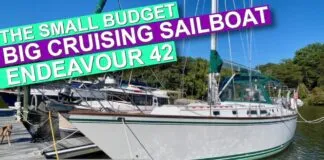
The Cheap Big Cruising Sailboat – Endeavour 42

Marine VHF Radio – What You Need to Know

Pearson 37 & 37-2 – Behind the Curtain

How To Test a Boat Engine
Latest sailboat review.
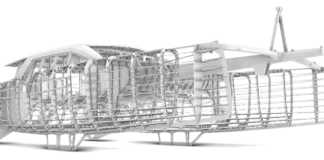
- Privacy Policy
- Do Not Sell My Personal Information
- Online Account Activation
- Privacy Manager

Please verify you are a human
Access to this page has been denied because we believe you are using automation tools to browse the website.
This may happen as a result of the following:
- Javascript is disabled or blocked by an extension (ad blockers for example)
- Your browser does not support cookies
Please make sure that Javascript and cookies are enabled on your browser and that you are not blocking them from loading.
Reference ID: 61e2e130-490a-11ef-bf33-f6d689334ca2
Powered by PerimeterX , Inc.
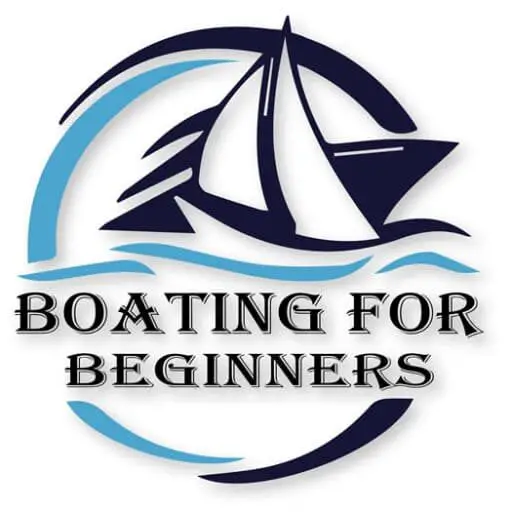
Boat Lighting – Complete Guide to Navigation Lights
I was sitting in the garage the other day admiring my boat when I noticed the green navigation light on the side of the hull, and it dawned on me that I haven’t had the boat out after sunset yet. It also got me wondering about the different places I’d like to travel this summer and what it would be like to navigate in the dark if I had to.
In addition to the legally required lights, I highly recommend having a marine waterproof spotlight in your boat at all times ( this is the one I prefer, which you can buy on Amazon with tons of good reviews ). The little headlight on a boat is nowhere near bright enough to safely navigate if you get caught on the water at night. Trust me, it can save you thousands in boat repairs and a dangerous situation.
I wanted to make sure that I fully understood everything there was to know about navigation lights, so I did some online research. I’ve put together a complete guide of the information I found online talking about the different navigation lights and what I needed to know about them.
What Are Navigation Lights On a Boat?
Boats require specific lighting configuration when operating between sunset and sunrise, or at times when visibility is restricted such as when it’s raining or foggy. Navigation lights are used to help other boaters see you when visibility is reduced, and it allows you also to see the other boaters to avoid collisions.
Navigation lights are also used to communicate with the other boats sharing the water. For example, the navigation lights can tell another boater, what size your vessel is, and in which direction you are heading. This information can be used by the boat caption to determine what the appropriate course of action would be as you approach each other.
By law, the navigation lights come in specific colors; white, red, and green. Even the arc of the illuminated light, the range of visibility, and the location is all specific to what type of vessel you are operating.
Do not assume that your boat came with the appropriate lighting or equipment from the factory or showroom. It is your responsibility to make sure that your boat has the proper navigation lighting configuration before you head out on the water.
What Type Of Boats Requires Navigation Lights?
Basically, in a nutshell, all boats require navigation lights if you’ll be operating them between sunset and sunrise, or whenever visibility is reduced.
This goes for the following types of vessels:
- Motorized vessels
- Non-motorized vessels
- Sailing vessels (Operating under sails)
- Sailing vessels (Operating under motor power)
- Vessels engaged in fishing
- Vessels engaged in trawling
- Towing vessels
- Anchored vessels
- Human-powered vessels such as Rowboats (Kayaks and canoes)
What Lights Are Required On a Boat?
Boats are required to have navigation lights. Navigation lights are required whenever you are operating your vessel between sunset and sunrise, or during any other times when your visibility is restricted from elements such as fog or rain.
The type of lights required depends on the length of your vessel as well as if it’s a powered or non-powered vessel. But in general, all navigation lighting systems will consist of red and green sidelights, as well as one or more white lights. A red sidelight indicates the port side of the vessel, while a green light shows the starboard side of the vessel. The white light in most cases is called an all-around light, which means it can be seen from any angle by other boaters.
Another type of navigation light is a yellow light. A yellow light is not very common to see, but if you do happen to see one, it would mean that a lead boat is towing another boat.
It is your responsibility to make sure you have the proper navigation lighting. It is also recommended that you take spare bulbs with you. The USCG doesn’t care if the lights were working when you left, they only care that the lights are not working when they are required.
Lights Required For Power Vessels Underway:
A powered vessel includes all motorized boats, including sailboats that use a motor.
Vessel length: Under 12 meters (39.4 FT.) Lighting requirement:
- One all-around white light that is visible at 360 degrees, and can be seen from two miles away. The all-around white light must be mounted at least 39 inches above the side lights.
- A pair of red and green sidelights that are visible 112.5 degrees and can be seen at least one mile away.
Vessel length: 12 meters to 20 meters (39.4 FT. to 65.6 FT.) Lighting requirement:
- A white masthead light located at the front of the boat, pointing in the direction you are traveling. This must be visible at 225 degrees and from two miles away. The masthead light must be positioned at least 8 feet above the gunnel.
- A white stern light located at the rear of the boat that is visible at 135 degrees and can be seen from 2 miles away.
Lights Required For Non-powered Vessels Underway:
A non-powered vessel includes sailing vessels and all other types of vessels that don’t have motors such as paddled, poled, or rowed.
Vessel length: Under 7 meters (23 FT.) Lighting requirement:
- You are required to display a white light that can be seen by other boats. White light could consist of a flashlight, torchlight, or lantern.
- If you can, it is recommended that you have an onboard 360-degree white light all-around set on the horizon, with a distance of at least two miles.
Vessel length: Over 7 meters (23 FT.) – NEED 3 IMAGES Lighting requirement:
- A pair of red and green sidelights, that are visible 112.5 degrees and can be seen at least one mile away.
- Alternatively, for sailboats of that are over 7 meters in length, they can display what is called a tricolor light A tricolor light can only be used while the vessel is underway using sails alone and never while underway by power. This light should also never be used at the same time that the regular sidelights are on. Either the tricolor light or sidelights can be displayed, but never both.
Lights Required For Vessels At Anchor (Less Than 50 Meters):
This rule applies if you are anchored away from a designated area such as a marina.
Vessel length: 12 meters to 20 meters (39.4 FT. to 65.6 FT.) Lighting requirement:
- White all-around light is required to be used so you are visible to other ships that could be in the area.
Due to variances in state boating laws/regulations, NASBLA does not provide state-specific information. You may contact your state boating office for the most accurate information. Contact information can be found here: https://www.nasbla.org/about-nasbla/boating-contacts .
Understanding The Difference Between Port And Starboard Lights
While standing on the deck and facing the front of the ship, the left side is called the Port and the right side is called the Starboard. The port is always red , while the starboard is always green .
This information is crucial to understand if you ever find yourself trying to navigate the waters at night or while your visibility is limited. For example, if you are sailing towards another vessel, you will be able to tell if that vessel is heading towards you, or if it is heading away from you based on which side the green and red lights appear to you.
If you see a red light coming towards you, that would mean the other boat is on your right, which means that boat would have the right of way. If you see a green light from an oncoming vessel than you would know that it’s on your left, which means you have the right of way.
When Should Navigation Lights Be Displayed On a Boat?
Navigation lights are required to be displayed in between sunset and sunrise, and anytime that visibility is restricted. For example, due to fog or rain.
Where Can You Buy Navigation Lights?
As discussed earlier, not all boats automatically come with the proper display of navigation lights. It is your responsibility to ensure that your boat has all of the proper equipment for your safety and the safety of others.
The prices for navigation lights will vary anywhere between $9.00 to $100.00 depending on what style and manufacturer you buy. You could even spend as much as $500.00 on some of the higher-end navigation lightings. Be sure to shop around and take a look at what is available, to ensure that you are finding the best lights, at the best prices.
Definitions
All-Round Light: White (32pt/ 360°) Masthead Light: White (20pt/ 225°) Sidelights: Red (10pt/ 112.5°) & Green (10pt/ 112.5°) Stern Light: White (12pt/ 135°)
Similar Posts
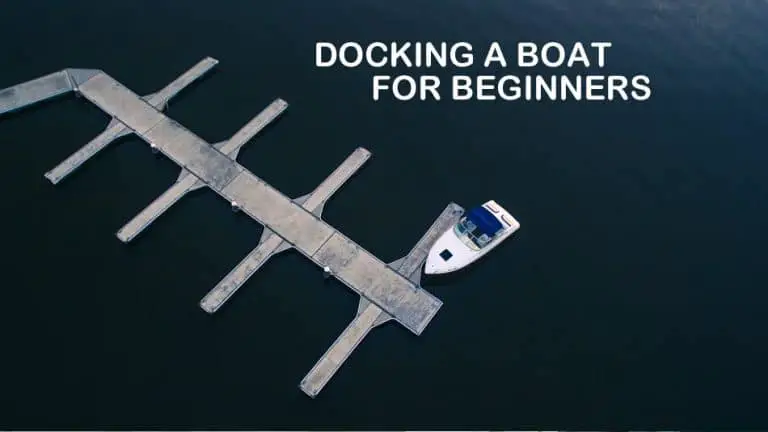
Docking a Boat For Beginners and What You Should Know
Docking a boat for the first time is probably one of the more nerve-wracking experiences you will have to endure as a boater. I bet practically everyone you talk to will tell you how easy it is to dock a boat, and well, for the most part, they will be right. It really is an…
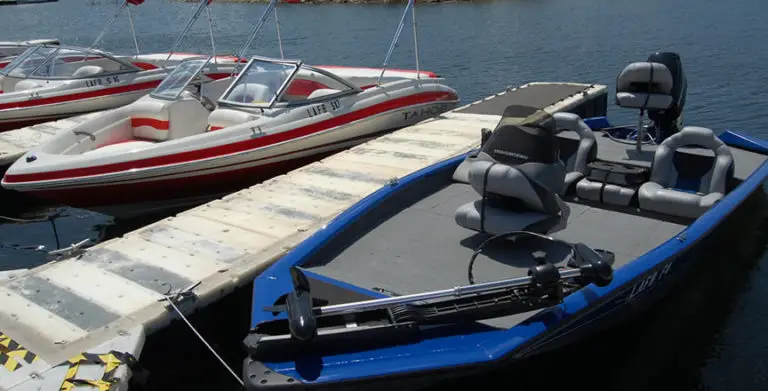
Best Boats For Beginners
This post is a beginners guide to buying your first boat. When I first started to dig deep into the research and figure out what the best types of boats for beginners were, I had no idea that there were so many different types of boats to choose from. There are so many different choices…

Complete DIY Boat Maintenance Guide For Beginners
Now that I’m a boat owner, I’m starting to learn that it’s not just all fun all of the time. Every boat requires some maintenance to ensure it’s running correctly and many of those things you can do yourself. I put together a list of items you should be checking and doing to help prolong…
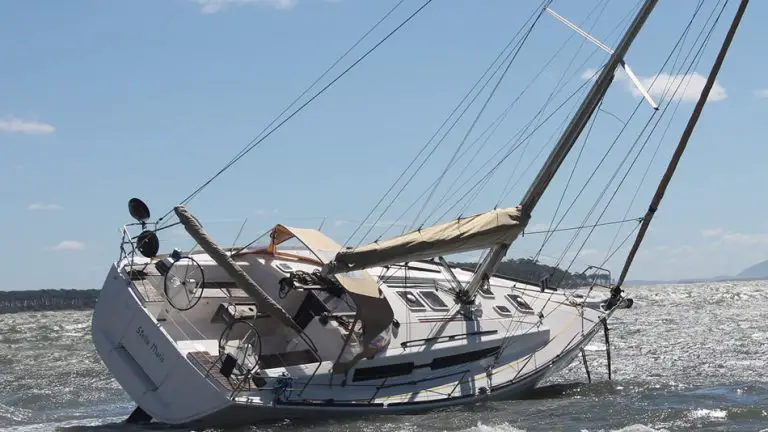
Can a Sailboat Tip Over? How to Avoid it From Happening
While out sailing across the sea with a friend, some thoughts came to my mind which I was unable to get away from. Can this sailboat tip over? What can cause it to tip over? Is there anything I can do to prevent it? These were the questions that kept asking myself over and over….
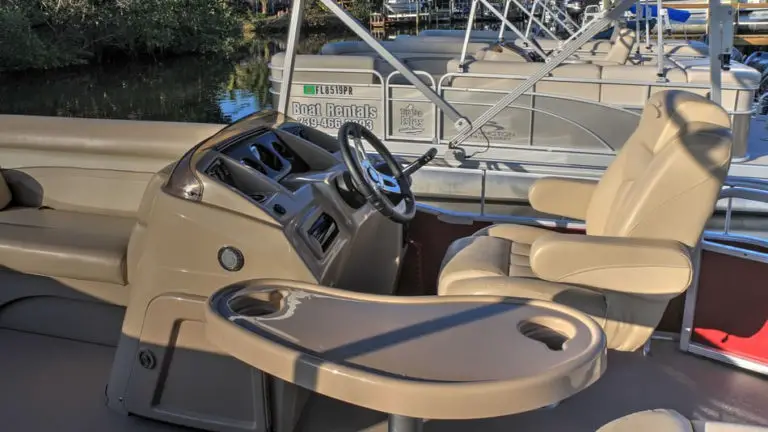
Which Boat Seat is Right For You
When it comes to boat seats there’s more to them then you think. There are many different styles and levels of comfort to choose from, similar to how there are many different styles of couches or recliners you can buy for your living room at home. Picking the right seat for you depends on you…

Starting Boat Motor Out Of Water
I’ve heard a lot of boaters talking about how they start their inboard or outboard engine while the boat is on land so they can test the motor before they have it on the boat launch. That got me wondering how safe it could be for the engine, so I did some research. As it…

- Gift Certificate
- --> Login or Sign Up

Shop by Category
- All LED Replacement Bulbs
- BA15S/BA15D Bayonets (1141/1142/1156)
- BAY15D Indexed Bayonet (1157)
- BA9S Miniature Bayonet
- Edison - Screw-Type
- Festoon (SV8.5)
- Fluorescent Style
- MR11 & MR16
- PAR 36 Sealed-Beams
- Socket Adapters
- Boat Specific LEDs
- All LED Fixtures
- Interior LED Fixtures
- Exterior LED Fixtures
- All Navigation Lights
- Nav Lights By Function
- Economy Series LED Navigation Lights
- USCG Certified Navigation Lights
- LED Retrofit Bulbs for Nav Lights
- Portable LEDs & Flashlights
- All Cruising Necessities
- Comfortable Cruising Accessories
- Wireless Headset Communicators
- Chemicals and Compounds
- All Marine Wind Generators
- MarineKinetix MK4+ Wind Generator
- Wind Generator Installation Accessories
- Spare & Replacement Parts
- Marine Energy Products
- All Wiring & Electrical
- Marine Wire & Accessories
- Power Supplies & Voltage Converters
- LED Dimmers & Switches
- Wireless Remote Controls
- Dusk-to-Dawn Photocells
- 12VDC Device Chargers
- All Cristec / Scheiber OEM
- Cristec Products
- Scheiber Products
- Mantus Anchors
Shop by Brand
- MarineKinetix
- Cruising Solutions
- Sirius Signal
- View all Brands
- Navigation Lights
LED Tri-Color and All-Around Anchor Navigation Stack Light

- Create New Wish List
- Similar Products
Product Description
Specifications:
- 10-30VDC, low EMI design
- Current draw of <0.50A @ 12VDC
- Brass / hardened plastic construction
- Easy mounting with four (4) screws, not included
- Red/Green/White LEDs for maximum transmissivity
- Sharp sector separation
- High-Output LEDs exceed USCG visibility requirements for boats up to 60'
- 8" height x 3" diameter
This combination tri-color / all-around anchor navigation light for sailboats is a great and economical LED solution to freshening up the top of your mast. The tri-color's LEDs lower the wattage by 80% while providing a brighter output than traditional 25W incandescent stack lights.
Why add a tri-color?
It substantially increases the distance at which your boat can be seen at night. Under the USCG/COLREG rules, a tri-color is optional while under sail, and provides a significant benefit in terms of visibility when cruising. It is highly recommended for cruisers and folks who venture offshore at night.
What is included?
Included is the tri-color/anchor stack light pre-fitted with replaceable Marinebeam LED bulbs. Up top is a partitioned tri-color LED bulb, and a 360 degree LED anchor light bulb. The bulbs are wired separately, and are controlled by using a single-pole-double-throw (SPDT) type switch (not included). A photocell anchor light is optional.
What is the photocell option?
The photocell option allows automatic dusk-to-dawn operation, which give you the flexibility to leave the boat in the daytime with the assurance that the anchor light will come on automatically at dusjk as the sun sets. It also automatically turns off the anchor light at dawn, so you don't need to remember to do it. This is all accomplished with the addition of a photocell sensor on the anchor light LED. The dusk-to-dawn function is enabled only for the anchor light. The tri-color is still switched manually.
Try it risk-free! If you are not 100% satisfied, our 30-day money back guarantee offers you a risk-free test.
Product Videos
Custom field, product reviews, write a review.

1 Review Hide Reviews Show Reviews
Posted by Clay on 4th Sep 2016
The tri-color light blends together rather than form distinct color changes at 112.5°, 112.5°, and 135°. I had to make a blind on the inside of the light fixture to keep the colors separate, and a blind for the outside to make the color changes more distinctive. The photocell on the anchor light only works when the sun is low on the horizon, otherwise the tri-color light blocks the photocell and causes the anchor light to turn back on.
Recommended

sku: N1-360-CLR
Led all-around anchor light.

sku: TW-TRI-CMB
Led tri-color and anchor light combination bulb.
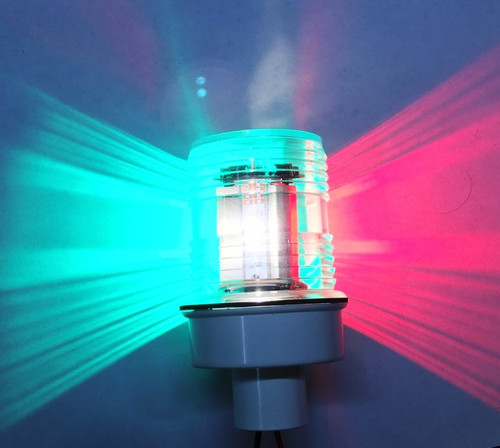
sku: N3-TRI-CMB
Smart led tri-color, anchor light, and strobe.
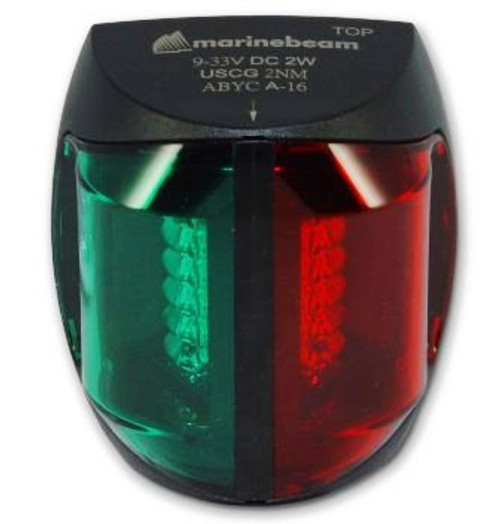
sku: N1-112-RGN
Led bi-color navigation light.

Ex-Display & Sample Sale
- Search for:
No products in the basket.
- Base Layers
- Technical T-Shirts
- Sailing Jackets
- Sailing Trousers
- Dinghy Footwear
- Sweatshirts
- Holebrook Samples
- Pelle Samples
- Changing Robes
- Cleaners & Proofers
- Scarves / Snood
- Dinghy Equipment
- Hi-fits / Trousers
- Hiking Equipment
- Hiking Shorts
- Spray Tops / Smocks
- Full Wetsuits
- Shorty Wetsuits
- Long John Wetsuits
- Wetsuit Tops
- Wetsuit Shorts & Trousers
- Summer Wetsuits
- Winter Wetsuits
- Children’s Wetsuits
- Men’s Wetsuits
- Women's Wetsuits
- Wetsuit Sale
- Technical Clothing
- Casual Clothing
- Hats, Gloves, Socks & Scarves
- Watersports
- Accessories Sale
- Amazing Bundle Deals
- Cables & Accessories
- Fixed GPS/plotters
- GPS Antennas
- Handheld GPS/Plotters
- Marine Cameras
- Mounting/Brackets
- Radar Scanners
- Sailing Watches
- Thermal Cameras
- Waterproof Cases
- Accessories
- Fish Finder Sonar
- Depth Instruments
- Multifunction Systems
- Speed Instruments
- Weather Instruments
- Wind Instruments
- Autopilot Accessories
- Cockpit Autopilots
- Onboard Autopilots
- Navigation Charts
- Plotting Aids
- Entertainment Accessories
- Entertainment Systems
- Speakers & Subs
- Electronics
- 4G and WIFI
- Handheld VHF Radio
- Mounted VHF Radio
- VHF Antennas
- Walkie Talkies
- Buoyancy Aids
- Lifejackets
- Children’s Life Jackets
- Commercial Lifejackets
- Harnesses/Bosuns Chair
- Lifejacket Accessories
- Safety Knives
- Safety Lights
- Safety Lines
- PLB & AIS
- Satellite Communicators
- Fire Safety Stick
- Fire Extinguishers
- GPS Tracker
- Liferaft Accessories
- Recovery Devices
- Survival Suit
- Cones & Balls
- Dye Markers
- Horns & Whistles
- RADAR Reflectors
- Bungs & Bailers
- Battery Management
- Chargers & Alternators
- Electrical Other
- Leisure Batteries
- Plugs & Connectors
- Shore Power
- Wind Generator
- USB & Phone Chargers
- Blocks & Terminals
- Circuit Breakers
- Seals / Outlets / Plugs
- Switches & Panels
- Wires & Cables
- Deck Lights
- Interior Lighting
- Navigation Lights
- Searchlights
- Head Torches
- Freshwater Pumps
- Macerator Pumps
- Service Kits
- Toilets/Waste
- Spray Guns & Connectors
- Toilet Accessories
- Toilet Parts
- Waste Tanks
- Ball Valves
- Inlet & Skin Fittings
- Metal Plumbing Fittings
- Plastic Plumbing Fittings
- Diverter Valves
- Non Return Valves
- Deionised Water
- Filters & Purification
- Taps & Sinks
- Water Heaters
- Water Tanks
- Gas Connectors
- Gas Fittings
- Bow Thruster
- Bungs And Self Bailers
- Cleats and Fairleads
- Deck Filler
- Deck Flooring & Protection
- Eye Bolts & U Bolts
- Grab Rail / Handles
- Hooks and Clips
- Latches & Catches
- Shackles & Swivels
- Tiller Extenders & Joints
- Track & Cars
- Winch Handles
- Fans & Windscoops
- Hatch & Inspection Covers
- Hatch Shades
- Hatches & Portlights
- Plastic Hatches
- Yacht / Keelboat Rope
- Dinghy Rope
- Dockline / Mooring Rope
- General Purpose Rope
- Watersports Rope
- Fender Rope
- Rope Accessories
- Furling & Reefing
- Mast, Spars & Sails
- Pins & Rings
- Rigging Screws, Adjusters & Tensioners
- Splicing & Whipping
- Thimbles & Stoppers
- Galvanising Paints
- Thinners & Solvents
- Paint Brushes
- Glue & Adhesives
- Mixing Pots & Accessories
- Resins & Epoxy
- Sealants & Caulking
- Boat Cleaner
- Cleaning Equipment
- Fabric Cleaners & Proofers
- General Cleaners
- Metal Cleaners
- Onboard Cleaner
- Polishes & Waxes
- Vinyl Cleaner
- Teak Cleaner
- All Zinc Anodes
- Zinc Shaft / Prop
- Zinc Engine / Outdrive
- All Aluminium Anodes
- Aluminium Hull
- Aluminium Shaft / Prop
- Aluminium Engine / Outdrive
- All Magnesium Anodes
- Magnesium Hull
- Magnesium Shaft / Prop
- Magnesium Engine / Outdrive
- Bow Thruster Anodes
- Hanging Anodes
- Bolts & Fixings
- Backing Pads
- Lubricants & Grease
- Power Tools
- Marine Prepacks
- Dehumidifiers
- Blowers & Exhaust
- Engine Oil & Additives
- Oil Extractors & Filters
- Shaft Bearings
- Pumps & Inflation
- Tender Accessories
- Petrol Engines
- Boat Fender
- Dock Fender
- Edging Strip
- Hooks & Pumps
- Mooring Buoy
- Step Fenders
- Anchor Bags
- Anchor Connectors
- Anchor Lines
- Anchor Windlass
- Compensators
- Personal Craft
- Engine Covers
- Fuel Tanks & Lines
- Fuel Connectors
- Kill Switches
- Propeller Bags
- Straps & Ratchets
- Flag Staff & Holder
- Lighters & Matches
- Cabinet Fridges
- Cooling Kits
- Portable Fridge/freezers
- Chandlery Misc
- Cup Holders
- Sail Knives
- Seats & Cushions
- Games & Toys
- Gift Vouchers
- Nautical Gifts
- Novelty Hats
- Anemometers
- Clocks & Barometers
- Teak Fittings
- Weather Stations
- Galley Equipment
- Tumblers & Glasses
- Water Bottles & Flask
- Inflatable Paddleboards
- Hard Paddleboards
- Inflatable Kayaks
- Handles / Bridles
- Throw Lines
- Swim Accessories
- Sea Scooter
- Free Delivery on UK mainland orders over £100 excl. Highlands / rural areas
Port, Starboard, Stern, Anchor, Tricolour, Bicolour, Masthead. We have all the navigation lights you need, many in LED as well as traditional halogen.
Showing 1–36 of 39 results
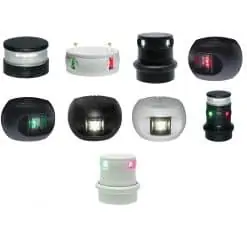
Aqua Signal Series 34 Navigation Lights
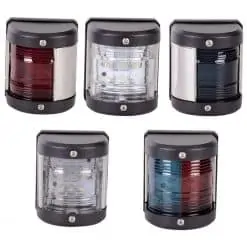
Talamex Led Navigation Lights
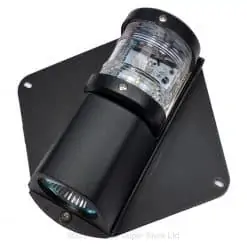
Led Combo Masthead Deck Light
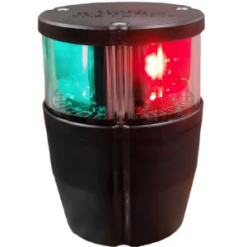
Mantagua Navipro Tri-Colour with Anchor Light
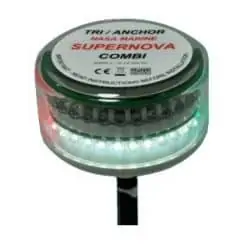
Nasa Supernova Combi Tri/Anchor LED

Lalizas Tri-Colour Lights & Anchor Light
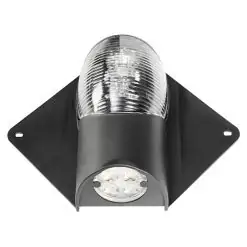
Osculati Navigation And Deck LED Light
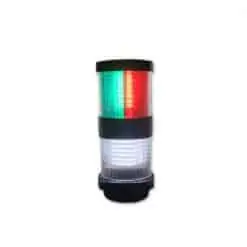
AAA LED Tricolour/Anchor Light
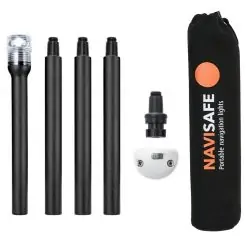
Navisafe Pole & White All Round Light With Vertical Navimount
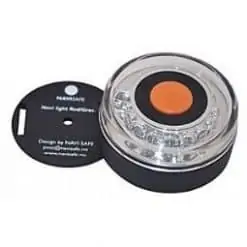
Navi Light 360- Magnetic

Nasa Supernova LED Tricolour Light
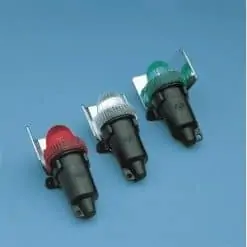
Emergency Battery Navigation Lights
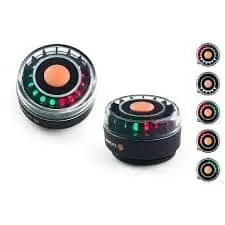
Navi Light Tricolour Magnetic
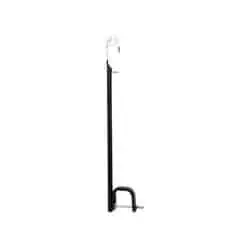
Talamex All Round Nav Light With Bracket – Battery Powered
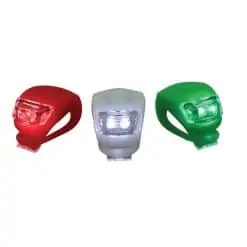
Lalizas Flexy Emergency Navigation Lights

Navigation Light Classic N12

Trem All-Round Light White Folding

AAA LED Vertical Mount Navigation Light Pair

AAA LED All-Round Navigation Light

AAA All-Round LED Stern Pole Light
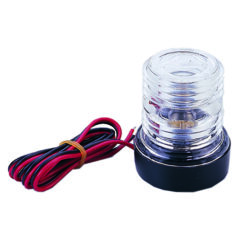
AAA LED Anchor Light
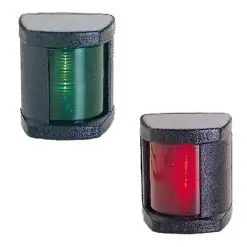
Lalizas Classic LED Navigation Light
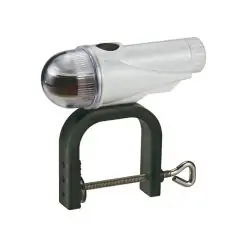
Talamex Led Duo Colour Nav Light With Bracket – Battery Powered
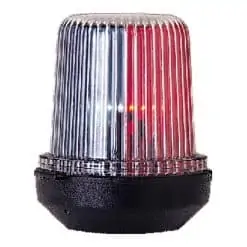
Navigation Light Classic S12
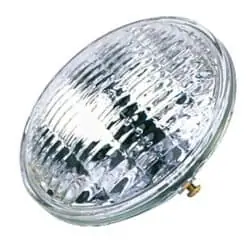
Aqua Signal Halogen Bulb 12V/50

AAA LED Portable Navigation Light
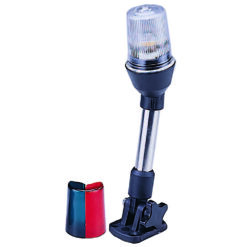
AAA All-Round LED Tricolour Pole Light
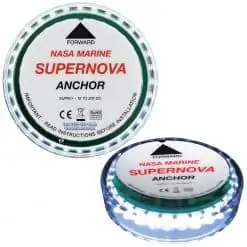
Nasa Supernova LED All round White

Lalizas Navigation Light JUNIOR 7 Stern Light 135°, with white housing
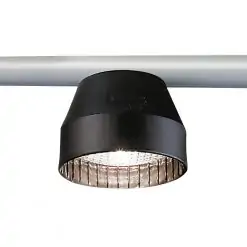
Aqua Signal Floodlight Hamburg LED
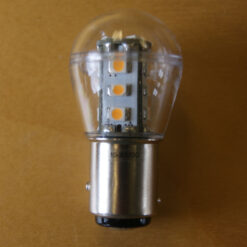
Navigation/Interior Bulb

Aqua Signal S20 Port
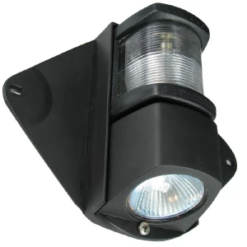
Mantagua LED Spotlight & Masthead Navigation Light

Mantagua Tiny Tri-Colour Anchor Light
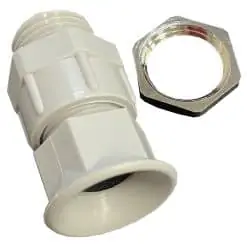
Aqua Signal Line Plug Component For S40

Aqua Signal Angle Bracket
Username or email address *
Password *
Remember me Log in
Lost your password?
Email address *
A password will be sent to your email address.
- Shopping Cart 0
Boat Masthead Lights

Whether you use your craft for water sports, fishing, or leisure cruising, it should be equipped with proper navigation lights to make sure it is safe and legal. Even if taking a boat out on the water after the dark is not your cup of tea, sometimes your afternoon water trip may turn into a night adventure. Besides, if you are a regular boater you will inevitably get caught in a rain or fog at some point. Obviously, inclement weather reduces visibility putting you at risk of having an accident with another vessel. That is why every craft is required to have navigation lights. The size of a boat determines what type of them should be used. To wit, masthead lights are required by all motorized boats that are longer than 39.4 feet.
They are white and installed at the front of a vessel. The arc of illumination is 225 degrees. They are combined with stern lights which are visible across 135 degrees to provide 360 degrees of visibility. When it comes to boats that are greater than 39.4 feet but less than 65.6 feet, they should be visible from at least three nautical miles away. For vessels which are less than 39.4 feet, the visibility range is two nautical miles. Keep in mind that they can be also equipped with an all-round light instead of a set of stern and masthead lights. Whatever size of your vessel, we have the right product for it in our selection. Our offerings are made by reliable brands including Sea Dog , Attwood , and many others.
Featured Brands

Related Categories

IMAGES
VIDEO
COMMENTS
Navigation lights on a sailboat can be confusing. If you understand the reason behind why they are the way they are however, they can make a lot more sense. ... The steaming light and the anchor light both go up the mast, but you can't use an all around white light while using the 225 degree stern light at the deck level because to other ...
So what are the basic navigation light rules? For most small vessels, motoring requires red and green (port and starboard) lights, and a white light visible in all directions around the boat. This is almost always a stern light and a masthead light on sailboats. Boats under sail require port and starboard lights, and a white stern light.
Tricolor Light. A tricolor light is a sailboat mast light that has your three types of bow light in one convenient piece of equipment. They are for sailboats that are smaller than 65.6 feet long. The point of this sailboat light is to increase your nighttime visibility. They are mounted at the top of the mast, allowing larger boats to see yours ...
Chuck Hawley discusses options for navigation lights on your boat and what lights you can combine. Navigation Lights Requirements Depend on Vessel Size. Navigation lights requirements vary depending on the length of the boat. Larger boats are required to use lights with a higher visibility range and cannot combine sidelights into a single bi ...
Outstanding navigation course: lights and shapes, ... vessel of less than 20 metres in length the lights may be combined in one lantern carried at or near the top of the mast where it can best be seen. A sailing vessel underway may, in addition to the lights, exhibit at or near the top of the mast, where they can best be seen, two all-round ...
Navigation lights are used to prevent collisions at night or in times of reduced visibility, and are an essential tool in keeping you and your vessel safe. Nav lights allow you to see other nearby vessels, and allow other vessels to see you. Nav lights also provide information about the size, activity, and direction of travel.
Boat Navigation Light Regulations. Several rules and specifications are related to the type, size, layout, arc, and distance of visibility of boat navigation lights used by all vessel types which are collectively known as the International Regulations for Preventing Collisions at Sea or COLREGs.The navigational lights used are known as 'COLREG lights and shapes.
Practical Sailor' s previous evaluations of navigation lights (September 2005 and Jan. 15, 2002) were tests of tri-color Photos by Ralph Naranjo. 288. masthead lights, sidelights, sternlights, and all-around white lights. For this review, we narrowed the test field and focused solely on LED tri-color navigation lights (sidelights and a stern light combined in a single fixture) because of the ...
Boat navigation lights are essential when you're out on the water. They're essential, but it's easy to misunderstand their uses and correct placements. If you don't know the correct placement for your stern lights or know what type of navigation light you need on your mast, don't worry: we're here…
This is typically seen on sailboats, mounted at the top of the mast and used when the boat is under sail. 4. Stern Light. As the name indicates, a stern light is a white light intended for your boat to be visible from behind, so it faces backwards with 135° of visibility, 67.5° on each side. ... Key Considerations for Boat Navigation Lights.
One combination red, green, and white light exhibited near the top of the mast meets the navigation lights requirement for sailboats less than 20 metres (65.6 feet) in length and not operating under engine power (Rule 25).
Navigation lights are easy to take for granted, but like so many other bits of safety and navigation gear on a boat, there may eventually come a time when they really need to shine. Contacts- Attwood, 1016 N. Monroe St., Lowell, MI 49331; 616/897-9241.
Explore top masthead navigation lights for your boat. Shop reliable and bright options at West Marine. 6LchHDMbAAAAAGPRKfV4mVX9FPM_gdroO62T7nWA. Enter Zip Code ... OGM Series Q Collection Mast Mount LED Steaming/Masthead Navigation Light
OGM Series Q Collection Mast Mount Deluxe LED Steaming/Anchor Navigation Light Series 5500 Waketower LED All-Round Navigation Light Surface Mount Aluminum Port Navigation Light, 2 Nautical Miles, Red ... Boat navigation lights help to ensure visibility to other boats when you are underway or anchored at night. We carry the lights you need to ...
What Are Navigation Lights On a Boat? Boats require specific lighting configuration when operating between sunset and sunrise, or at times when visibility is restricted such as when it's raining or foggy. Navigation lights are used to help other boaters see you when visibility is reduced, and it allows you also to see the other boaters to ...
This combination tri-color / all-around anchor navigation light for sailboats is a great and economical LED solution to freshening up the top of your mast. The tri-color's LEDs lower the wattage by 80% while providing a brighter output than traditional 25W incandescent stack lights.
Take a look through our wide selection of marine navigation lights including LED navigation lights for vessels of all sizes and buy online today ... Mast, Spars & Sails; Pins & Rings ... McLube McMurdo Meaco Meguiars Mercury Meridian Zero MGDuff Moorfast Mrt Musto Nasa Nauticalia Navico Navionics Nawa Nebo Noco North Sail North Sails Nuova Rade ...
Amazon.com: mast lights for boats. Skip to main content.us. ... Five Oceans Tri-Color All-Around Anchor Boat Navigation Light, High Performance Polycarbonate Housing, 12V DC, Meets USCG 2 NM Rules, Mast Mount for Sailboat - FO2071. 3.9 out of 5 stars. 41. $84.90 $ 84. 90. FREE delivery Tue, Jun 25 .
SeaSense® 4" L 2 Nautical Miles Fixed Mount Mast LED Light (50023911) 0 # mpn1740331124. ... That is why every craft is required to have navigation lights. The size of a boat determines what type of them should be used. To wit, masthead lights are required by all motorized boats that are longer than 39.4 feet.
Assos Joyland Miracle Mile Shops at Planet Hollywood Dig Maine Gems Mangu Disco Music City Circuit Water World Smoky Mountain Deer Farm & Exotic Petting Zoo Willow Beach Crayola Experience Calypso Cabaret No.1 Ladyboy Show in Bangkok with Optional Dinner Show Admission Ticket to Museum of Illusions Orlando Copenhagen Urban Honey Factory - Bybi Tuscan Cooking Class in Central Siena Rafting on ...
Likino-Dulyovo Tourism: Tripadvisor has 61 reviews of Likino-Dulyovo Hotels, Attractions, and Restaurants making it your best Likino-Dulyovo resource.
This page is part of the Facilities Collection.. Established in 1917, this facility manufactured munitions before it was redirected toward production for the USSR's military and civil nuclear programs.In 1954, Elemash began to produce fuel assemblies, including for the first nuclear power plant in the world, located in Obninsk. In 1959, the facility produced the fuel for the Soviet Union's ...
Lyubertsy Tourism: Tripadvisor has 1,975 reviews of Lyubertsy Hotels, Attractions, and Restaurants making it your best Lyubertsy resource.